The first creation account of Genesis begins and ends in the brooding, relaxing, rest of G-d, Father, Son and Holy Spirit. WHAT WE’VE LEARNED SO FAR:
BEGINNING WITH THE AUTHOR http://bethmelekh.weebly.com/yaakovs-blog---14991514148914971493-15131500-1497150615111489/introduction-to-genesis-beginning-with-the-author GETTING TO KNOW THE TEXT http://bethmelekh.weebly.com/yaakovs-blog---14991514148914971493-15131500-1497150615111489/genesis-chapter-11-23-part-one-getting-to-know-the-text B’REISHIT: Author: G-d, HaShem, Yeshua, Ha-Ruach Scribe: Moshe (Moses), with collation and annotation of remaining events completed by Yehoshua (Joshua). It’s interesting to note the meanings of the Hebrew scribes’ names. Moshe (Draw forth) and Yehoshua, Yeshua (Salvation, the L-rd’s Salvation). Creation is drawn forth from nothing, through Yeshua, the L-rd’s Salvation for the purpose of creation’s redemption. Dating: Approximately the 4th century BCE. Category, Style & Genre: Historical, Instructional, from the Torah, the five books of Moses (It uses pictorial language and the occasional poetic phrase in the same way we use pictorial and poetic language in daily life, for the purpose of conveying factual information). A Definition of Divine Inspiration and Human Penmanship: The Word of G-d (Yeshua), imparted to and through a human being in whom G-d’s Ruach (Spirit) resides; the product of which is the convergence of truth communicated in both spoken and written form, for the purpose of transmitting to humanity, G-d’s purpose and will for all creation. Note: Divine Inspiration is not dictation, channelling, auto-writing or any other form of mindless witchcraft. “The Ruach (Spirit) of the HaShem (YHVH) spoke through me; His oo-meel-ato (discourse, word, conversation) was on my tongue.” –2 Samuel 23:2 “My lev (Core being, heart) is stirred by a noble theme as I recite my verses for the king; my tongue is the pen of a skilful writer.” –Psalm 45:1 The Basic Thematic Distinctions in Genesis:
Division of the Days of Creation: Days of Forming Days of Filling 1)Light (Or) (v3) 4) Luminous Bodies (Ma’or) (v14) 2)Waters (Shamayim, Mayim) (v7) 5) Every living thing filling the sky waters & the earth waters (v21) 3)Dry ground (eretz)/Vegetation (v9-11) 6) Every creature that fills the earth (eretz), Plants for food, Humanity (v24-30) INTERPRETATION: Keeping in mind that we are reliant on the direction of the Holy Spirit, the illumination of the Rabbi Yeshua and the surrounding fidelity of the Father in all Scripture interpretation; we are not afraid of the suppositions presented by science, philosophy, art and so on. Any and every interpretation that agrees with the wider Biblical text of the Messianic Canon (Torah, Neviim, Ketuvim and Brit HaChadashah), may be considered. However, only that which is stated in the plain meaning of the text, or, submits to the plain (p’shat) meaning through Hint (Remez), Comparative meaning/Halakhic principal (Drash) and Divine Mystery (Sod), may be accepted as a reliable foundation upon which to build our theology in action (Hagadah v’halakhah). Hebraic Methods of Interpretation (PaRDeS): P’shat: Plain Meaning Remez: Hint Drash: Comparative Meaning Sod: Divine Mystery Overview: Genesis 1:1-2:3 conveys the foundational truth that G-d, Who is uncreated, created all that exists from nothing, Ex nihilo. This stands in stark contrast to the many theories of the universe that seek to prove accidental creation or the eternal existence of the universe. In Genesis 1:1-2:3 the creation is described in broad terms but with interesting detail that shows (as one would expect from a divinely revealed text) that G-d was concerned not only with revealing a pictorial account but also an historical account that would stand up to the honest scientific and literary critique of humanity; not because He requires our affirmation but for the sake of our salvation. Genesis, the first book of the Torah, also begins the literal history of Israel, a literal ethnic people chosen by G-d and given a clear lineage that reaches back to the first man Adam. Though it is impossible to determine the time span covered by the genealogical listings of the Genesis text, due to the Hebrew practice of listing key figures in ancestral records and the ambiguous nature of the Hebrew, “ben, b’nai”, meaning, “Son, Sons, Sons and daughters, Grandson, Grandsons, Grandchild , ancestor etc”; what we do know is that this genealogy is intended to be understood as an historical record leading from the inception and to the creation of a holy people, who have been chosen by G-d to transmit the Ketuvim (Writings) of G-d to future generations of both our own people and the nations of the world. Ultimately, this was intended to bring the Good News of redemption, which is first mentioned in specific terms in Genesis 3:15 THE TEXT (Translated from Hebrew by Yaakov ben Yehoshua) GENESIS (B’REISHIT) 1:1-2:3 1:1 In the beginning, creating from nothing (bara), Elohim made the waters of the sky, and He made the earth (eretz): Some English translations of Genesis translate the first composite Hebrew word of Genesis 1:1, “B’reishit” as, “When G-d began”. Though it’s true to say that in some cases the Hebrew prefix, “Beit” can mean, “When”, the more common meaning is, “In the”. Also, the better translation using, “When” would be, “When beginning” because the Generic Hebrew noun Elohim (G-d) is used following the word reishit (beginning). It seems far too obvious that the translation, “When G-d began” is attempting to promote an agenda that lends itself to scientific revisionism rather than intellectual honesty. The Hebrew verb, “bara” (create from nothing: used only of G-d) is singular, denoting the intense rather than plural nature of the first use of Elohim (G-d). The Hebrew, “Sh’mayim” combines Sky and waters. Although this is a clear reference to the heavens, it’s important that the components that make up this composite word are illuminated in order to show the legitimate truth of the elemental beginnings of the creative order. The Hebrew, “eretz” speaks of the entire mass of the earth. This first verse begins a rhythm of G-d’s creative intention followed by His, for lack of a better phrase, hands on moulding of those elements created by the Word (John 1:1-2) of HaShem. 1:2 And the earth came into existence, desolate (tohu) and vacant (bohu), and darkness (choshekh) was over the face of deep, surging, subterranean waters, and the Spirit, Wind, Breath of Elohim, brooded (Like a mother eagle), relaxed, over the face of the waters. At G-d’s command, and through His bara (creative action of G-d), all things come into existence. Some have suggested that there is a gap between verses 1 and 2 of Genesis 1, in which a heavenly catastrophe took place, a battle between good and evil that resulted in the newly created earth descending into chaos at the hands of an evil monster or devil. This has much in common with Near Eastern mythology but has little in common with the Hebrew text or the theme of the book of Genesis. The Hebrew, “bohu”, translated “empty, void, vacant” is thus translated “chaos” by those who want to make a link between the Biblical account and ancient Near Eastern mythology. However, the word, “bohu” is found in only three other places in the Hebrew Scriptures (Isaiah 34:11; 45:18; Jeremiah 4:23) and does not describe chaos but desolation and emptiness. In fact it is impossible for the fall of Satan to have happened prior to the creation of humanity because elsewhere Scripture explains that Satan was a guardian cherub of Eden (Ezekiel 28:10-14) before he fell (Isaiah 14:12-14; Luke 10:18). Therefore, at some point between the creation of Eden and the creation of humanity, Satan fell, tempted Adam through Eve (Genesis 3:1-14), and as a result of Adam’s sin, sin entered the world (Romans 5:12). This chronology doesn’t allow for the possibility of the chaos myth or the, Gap theory. Jewish tradition (Targum Yonasan) also rejects the Gap theory, claiming that the malakhim (angels/messengers) were created on the second day and therefore could not have participated in a cosmic conflict which took place between the first and second days. The text itself does not tell us when the malakhim were created. However, we do know that they are created beings (Nehemiah 9:6; Psalm 148:2, 5; Colossians 1:16-17): “Praise Him, all His malakhim (angels): praise Him, all His hosts… Let them praise the name of HaShem: for He commanded (vayomeir), and they were created.” –Psalm 148:2, 5 The phrase, “desolate and vacant”, may also be translated, “formless and empty”. This phrase sets up the rhythm of the subsequent creation days. During the first three days G-d distinguishes and then gathers, thus giving form, and on the remaining three days He makes and fills the form, which had once been empty/vacant. It is noted by some, that choshekh (darkness) is not subject to a creative act and therefore always existed. This is easily refuted by the wider Scriptural text. “I form the light and create darkness,” –Isaiah 45:7 “Through Him all things were made; without Him nothing was made that has been made.” –John 1:3 Some, in misunderstanding the genre of teaching used by John in his gospel, mistakenly see the darkness of Genesis 1:2 as being in and of itself evil. This is folly. The words of John’s opening chapter are a drash (a comparative teaching) on the creation narrative that is intended to convey the pre-existent nature of the Messiah (The Word of G-d) and the battle that John’s generation were unable to see, the war between G-d and the darkness of the fallen world. A battle in which the fallen darkness (an allusion to spiritual blindness resulting from the fall of both Satan and humanity) is unable to comprehend or overcome the Light that emanates from Yeshua. We know that the darkness of Genesis 1 is exceedingly good because G-d says so (Genesis 1:31). Contrary to popular belief, darkness is not the absence of light. G-d is light and all things exist in Him, therefore the darkness spoken of here exists in Him. The existence of the earth as desolate and vacant also denotes a foundation that is to be built upon and filled up. In fact the first three days are devoted to the foundational elements of creation. These elements, which include water and earth, are brooded over by the Ruach (Spirit) of HaShem. The Hebrew, “m’ra-che-phet”, meaning, “brood, relaxed”, is used elsewhere to denote the protective nurturing actions of the mother eagle over her young, even prior to their birth (Deuteronomy 32:11). This brooding is motivated by the knowledge of future purpose. Every beginning has a goal, and the goal of The Beginning is Yeshua (Salvation). In a similar way to that of a mother eagle, who instinctively knows that her chicks will hatch and grow to learn how to glide on the wind, the Ruach (Spirit) of HaShem broods over the elements that will act as the beginnings of creation and more specifically, the mayim (waters) of the eretz (earth), which will soon be moulded into an image/likeness/representation of G-d, to form humanity, our purpose made certain, long before we ever came into being. “Like an eagle that breaks up her nest, That broods and relaxes over her young, He spread His wings and caught them, He carried them on His pinions.” —Deuteronomy 32:11 The intimate Hebrew description, “Al p’nei ha-mayim” (Over the face of the waters) illuminates the action of the Holy Spirit as He hovers over the surface of the earth water’s. The Ruach, breath of HaShem broods and breathes upon the waters that are representative of chayim (living), both practically and spiritually. This is a picture of the relationship between created chaiyah (life) and the life Giver. His breathe moving against the water, and its deep, surging response. What becomes clear from the wider Scripture, is that while G-d ceased for the period of the seventh day, He continues to sustain and purpose His creation. He continues to make (asah) each one of us into who we’re meant to be. “The Ruach (Spirit) of El (G-d), has made (asat’nee) me, and the breath (neshmat) of Ha-Shaddai (The Almighty) has given me life (Chayah).” –Job 33:4 After healing a man on the Sabbath Yeshua had this to say: “My Father continues to work hence forth, and I work.” –John 5:17 1:3 And commanded (vayomeir), Elohim, “Be light (Or)”, and light (Or) was: This verse begins a literary rhythm that uses a trifold pattern to convey the process of creation and the way it continues to unfold in our daily lives.
G-d commands creation, He sees that it is good and He gives all created entities unique names and roles in the order of the universe. From the view of humanity, G-d has created us in love, observes us with pleasure and imparts to each of us a unique and fulfilling identity and purpose in Him. The light which is commanded in this verse is essential to the remainder of creation. John’s Gospel understands this light to be the product of the Father through the Word (Yeshua), it illuminates the formless and empty elements and acts to ignite both the inanimate matter and the living souls which are to come. 1:4 And saw, Elohim, the light (Or), that it was good, and made a distinction, Elohim, between the light (Or) and the darkness (choshekh): Before distinguishing between light and darkness, G-d sees that the light is good. The light is a representation of all that is good. Distinctions are made throughout the creative process of G-d. In Hebrew thought the distinguishing of things is not the same as the separation of things. As mentioned previously, darkness is not the absence of light, rather it is a creation of The Light of G-d: “If I say, ’surely the choshekh (darkness) shall cover me’; even the laila (night, spiralling darkness) shall be Or (light) surrounding me.” –Psalm 139:11 1:5 And proclaimed (Vayikra) Elohim, the light, “day” (yom), and the darkness (choshekh), Elohim proclaimed, “night, spiralling darkness” (laiyla) and there was evening (erev) and there was morning (boker), day (yom) one (echad), a complex and intense unity. [Echad is a cardinal masculine Hebrew number that is also the Hebrew root meaning, “complex and intense unity”]. The light and darkness are named for purpose and identity. They are the first to be distinguished between and the naming of them establishes a foundation for the days of creation. We note that light is named first, followed by darkness, however the days are recorded in terms of evening and morning. This is a Hebrew format for measuring days that understands the evening as the beginning of the first 12 hours of a day and the morning as the beginning of the second 12 hours, thus it is a Hebraic formula for a 24 hour day. While in captivity in Egypt prior to the revelation of G-d’s Word at Sinai, the Israelites witnessed the worship of the Sun god Ra at the dawn of each day as the Sun rose and in the evening of each day as it set. As a counterpoint to this the text of Genesis shows the days as being subject to G-d and their rhythm follows the order of creation, “Darkness and light” in order to remind the Israelites of G-d’s sovereignty over all creation. Some suggest that day one of creation is not the first day of creation but merely a first day of creation. They seek to affirm the misreading, “When G-d began to create”, however this position becomes untenable when we note that the Hebrew, “echad” is the masculine cardinal number rather than the masculine ordinal Hebrew form used for the remaining five days of creation. This makes day one unique and establishes it as the first day of G-d’s creating. The Hebrew, “echad” is also the Hebrew root meaning, “complex and intense unity”. This same word is used to describe a bunch of grapes or an army going out as, “one man” (Numbers 14:15). It is also used to describe the complex unity of G-d in the Shema (Deut. 6:4). While we cannot say that this day is longer than 24 hours (Evening & morning), we can say that in some mysterious way, this day is a complex and intense unity. 1:6 And commanded (vayomeir) Elohim, “Be, atmosphere, the visible ach of the sky, hard shiny surface” by severing the waters and becoming distinct between the waters and from the waters. Thus the trifold rhythm of command, see and name, continues. This verse describes the vault of the sky as seen from the earth in an arch over the globe. Job 37:8 refers to the sky as being as, “hard as a mirror” and the prophet Isaiah notes that it’s like, “a tent (Kaohel)” (Isaiah 40:22). This dividing of the waters foreshadows HaShem’s deliverance of Israel and the nations. The distinguishing between the waters also conveys a sense of the clear boundaries set in place in order to produce the ideal environment for life on earth. As a mirror, the sky reflects our actions back to us, as a tent, it reminds us that we’re dwelling under the loving protection of G-d, and in the dividing of the waters we see that G-d, knowing the end from the beginning, had already prepared our escape from sin, just as He had already prepared Israel’s escape from captivity in Egypt through the divided waters of the Red Sea.. 1:7 And made (v’yaas) Elohim, the atmosphere, the visible ach of the sky, hard shiny surface, and distinguished it between the waters that were below the atmosphere and the waters that were above, and the atmosphere came into existence (stood upright). G-d, made/moulded/fashioned, the sky. The Hebrew v’yaas (constructing from something) is used here rather than the Hebrew bara (to create from nothing), why? Because G-d acts in His creation to form it in relationship to Himself. Those who claim a hands off approach by the Creator are hard pressed to refute the plain meaning of the text. We are told that G-d not only made the elements for the creation of things from that which did not exist, He also fashioned the elements into completed things. This has a great deal to say to us as followers of Messiah and children of HaShem. From the beginning, in the very process of His creation, He shows us the foundation of our security in Him by promising to complete that which He has begun in us. “Being confident of this, that He who began a good (tov) work (ma’aseh) in you will carry it on to completion until the (yom) day of Ha-Mashiyach Yeshua (The Messiah Jesus).” –Philippians 1:6 The writer of the letter to the Philippians understood the rhythm of creation and its relationship to the life of the individual believer and the community of faith. Note the Hebrew, ma’aseh, from the same root asah (to fashion, mould etc.) Also, note the correlation presented by the terms, yom and tov. Just as the sky, when complete, stood upright; all things were created for the purpose of standing upright. 1:8 And proclaimed (vayikra) Elohim, the atmosphere, “Sky waters” Elohim saw that it was good, and it was evening (erev) and it was morning (boker), day (yom) second (shinee) [a masculine ordinal number]. Some pay a great deal of attention to the fact that the Masoretic text of this verse does not include the phrase, “G-d saw that it was good”. The Septuagint (Greek Manuscript translated by Jewish Rabbis in the 3rd century BCE) includes the phrase, however, even if it were not included, in the end the result is the same, “G-d saw all that He had made and that it was exceedingly good” (Genesis 1:31). Rashi (RAbbi SHlomo Itzhaki 11th Century Jewish Rabbi and Scholar https://en.wikipedia.org/wiki/Rashi) in his commentary on the Torah/Chumash explains that in the case of the Genesis account there is a profound correlation between the Hebrew, “tov” (good) and the Hebrew, “tamiym” (complete, perfect, without blemish). He explains further that the reason that the Hebrew text of verse 8 does not include the phrase, “Elohim saw that it was good (complete)”, is because the waters (atmosphere included) were begun on the second day but were not completed until the third day, at which time the text says, “and saw Elohim, it was good.” Therefore the completion of each proclamation is sealed by the naming of the created entities and the statement, “and saw Elohim, it was good (complete, perfected, without blemish).” With day two, we are again faced with the debate regarding the Hebrew word, “Yom” and the numbering of the days. While it is true that the word yom can sometimes be used to refer to periods of indefinite length (Joshua 13:1; 24:31; 1 Samuel 14:18; Job 32:7), it is not the common meaning, nor would it have been understood this way by the Hebrews who received the present text at Sinai. Furthermore, the phrase, “Evening and morning”, as previously stated, is understood by the Hebrew to refer to the division of two 12 hour time periods that make up a standard 24 hour day (yom). We now note, that day two uses an ordinal, rather than cardinal masculine Hebrew number, “Shinee”. This gives the original Hebrew reader the sense of the weekly rhythm that comes with counting off the days. In fact this is still the way we count the days of the week. With the exception of the first day (which uses the cardinal number echad), the remainder of the creation week uses the same ordinal numbering as both the ancient and modern Hebrew, “Yom shinee, yom sh’lishee, yom re’vee’ee, yom chameeshee, yom sheeshee, Shabbat”. Therefore both the ancient and modern Hebrew reader understand the days, as read literally, to refer to 24 hour days making up the same week, devoid of any intermediary gaps of time or undetermined lengths of time. This refutes the claim by some that the days of creation are ordinal with gaps between them and denies the possibility of the days being of great length. It is worth noting that although days 1 through 6 are masculine, the Hebrew Seventh (called Shabbat in Exodus 20:11) is feminine. The creation account begins with the feminine presence of G-d’s Ruach (Spirit), brooding and relaxed like a mother eagle over creation and ends with the feminine Shabbat (rest, ceasing) of G-d being imparted to creation as a gift purchased by His work. With this in mind we can understand creation to have both begun and been completed in the rest of G-d. It seems abundantly clear that Moses understood these days as literal days that connected the rest of G-d to the rest of His people Israel. A sign that continues to this day, as we read from our siddurim on the eve of every Shabbat: “For in six days (yamim) HaShem made (asah) the sky waters (heavens) and earth, the sea, and all that is in them, and on the seventh day He ceased and rested: wherefore HaShem blessed the Sabbath day, and made it holy.” –Exodus 20:11 “The children of Israel shall keep the Sabbath, to observe the Sabbath throughout their generations, for a perpetual covenant. It is a sign between me and the children of Israel for ever: for in six days HaShem made heaven and earth, and on the seventh day he rested, and was refreshed.” –Exodus 31:16-17 1:9 And commanded (vayomeir) Elohim, “bind together the waters below the sky waters, uniting them in one place, appearing, the dry ground existed, it was so (stood upright). This is a pictorial way of describing the formation of the seas into which the waters of the rivers and lakes flow. Water plays a key part in the creation. We are reminded elsewhere that the earth was formed out of water (2 Peter 3:5) and “founded… on the seas” (Psalm 24:2). The waters are not to cross the boundaries set for them (Psalm 104:7-9; Jeremiah 5:22). 1:10 And proclaimed (vayikra) Elohim, the dry ground, “Earth” (eretz), and the mikvah (gathering together) of the waters, He proclaimed, “Seas” (yamim), and saw Elohim, it was good. The proclamation of G-d names the earth and the seas with a calling and purpose far beyond the days of creation. The eretz (earth) will one day be walked upon by One Who will be of the Am Ha-eretz (people of the land), and the waters, which are being gathered (mikvah), are a foreshadowing, not only of Israel’s escape through the Red Sea but also of the Biblical and now modern immersion ritual of the mikveh (Baptism). When we are immersed into Yeshua (Jesus) in the mikveh of His baptism (full immersion), we are participating in the gathering of the waters that He participated in from the beginning. 1:11 And commanded (vayomeir) Elohim, “Sprout forth from the earth (eretz) vegetation, glistening shoots bearing fertile seed and fruit trees with fruit (p’ree), bearing fruit according to their species (kind) on the earth,” existing, it was so (stood upright). 1:12 And breaking out of the land, vegetation, glistening shoots, fertile seed and fruit according to their species (kind), and trees bearing fruit with fertile seed according to their species (kind), and seeing, Elohim perceived that it was good. 1:13 And it was evening (erev) and it was morning (boker), day (yom) third (shlishee) [a masculine ordinal number]. Day three sees the climatic provision of plant life and food in preparation for the inhabitants of the earth that will soon come. It is interesting to note that while the text of Genesis 1 is a general overview of creation, it none the less takes time to give certain details, like the fact that the plant life is created, brought into existence according to its kind/species. This is one of the many aspects of the Genesis account that makes it impossible for the evolutionist. The order of creation aside, there is no room in the text for the evolution of species because the species are created complete according to their kind. They break forth from the earth, seeded by G-d, Who has made (asah) them, forming them and participating in their unique structure and growth. 1:14 And commanded (vayomeir) Elohim, “Exist luminous bodies, in the expanse (space) above the sky waters, distinguishing between the day (yom) and the night (Laila) and become signs for the seasons of holy gatherings (moadim), and for days, and years.” Notice that the command and purpose of the luminaries are intrinsically linked. Their purpose is so important that it is stated within the names given to the periods they govern (1: 5). In fact the luminaries themselves are not named. This is because they were worshipped by Israel’s contemporaries (at the time of her escape from Egypt) as masculine and feminine deities. Instead they remain nameless as servants of HaShem. 1:15 And they came into existence to serve in the expanse (space) above the sky waters, to give the light over the earth, existing, it was so (stood upright). Not only do these luminaries serve HaShem, they also serve the earth and its inhabitants. This doubling of servitude seems intended to make clear their subordinate position as created entities rather than deities. 1:16 And making (yaas) Elohim, the two luminous bodies which were large, made the light that was greater to govern the day, and the light that was smaller to govern the night and the stars, rolling, round, pin pricks, blazing, shining. We note yet again that G-d, “makes (yaas)” the two luminous bodies out of the elements He has bara (created from nothing). This affirms His active and continuing, “hands on” role in the creative process, over and above His role as uncreated Creator. This simple Hebrew word, “asah” refutes presumptuous ontological arguments that suggest a hands off, non-participatory approach from G-d following the creation of the original elements. 1:17 And gave them, Elohim, to be the light in the expanse, visible arch of the sky, above the sky waters, to be light over the earth. We now observe the giving of the luminaries as light sources for the earth. 1:18 And to govern in the day and in the night, and to distinguish between the light and the darkness, seeing, Elohim, that it was good. 1:19 And it was evening (erev) and it was morning (boker), day (yom) fourth (revee’ee) [a masculine ordinal number]. The luminaries, having been defined by servitude, are now gifted as governors of day and night and as signs of the distinct nature of light and darkness. G-d sees that this was good. 1:20 And commanded (vayomeir) Elohim, “Breed in the waters small creatures, with souls (nefesh) that are living (chaiyah), and let birds that fly be over the earth on the face of the expanse in the sky waters. It is at this point that the English understanding of the word, “soul” needs to be revised to meet the Hebrew understanding. Where Hebrew uses the word, “nefesh (soul)” it is speaking, not of the indefinable part of the human existence but of the centre of every living beings existence. It does not in and of itself indicate consciousness or intellect. The nefesh (soul) of an animal is the convergence of all its parts, however, this does not indicate intellect or consciousness as it does in the sense of the human nefesh (soul). The difference is clarified in the second chapter of Genesis by the very specific action of G-d in directly breathing His Spirit into humanity, something He did not do in the case of plant or animal life. Thus when we read of the creation of water creatures and birds who have soul life (nefesh chaiyah), we understand that they are the sum of their parts, but that there parts do not equal the parts of the human being. 1:21 And creating from nothing (bara), Elohim made sea creatures that were large, and all soul (nefesh) life (chaiyah) that glides, which wriggles and breeds in the waters, according to their species (kinds), and all birds with wings according to their species (kinds), and seeing, Elohim perceived that it was good. It is worth noting that these creatures are being created from nothing (bara). This is another problem for evolutionary theory which requires microorganisms to pre-exist, organisms that are somehow, without being self-aware, able to evolve and form into ordered, autonomous life forms. Again, each creature is created according to its own species/kind, completed at the hand of G-d, unique and suited to their environments. Any form of adaption that happens following this does not qualify as evolution except in the case of micro-evolution, which is simply a manipulative term used by evolutionary theory to replace the more accurate term, adaption. This change in terminology seems to have come about in order to try and bring some credibility back to the now untenable position of macro-evolution. 1:22 And blessing them, Elohim said, “Be fruitful, increase, fill the waters of the sea and birds increase in the earth. 1:23 And it was evening (erev) and it was morning (boker), day (yom) fifth (cha’mishee) [a masculine ordinal number]. The blessing to increase and be fruitful is pronounced over the animal life first as a foundation for the blessing that the creatures of the earth will be to humanity. It is interesting to note that this blessing relates to sexual procreation. It has not been pronounced over vegetative plant life but over living (chaiyah) souls (nefesh). 1:24 And commanded (vayomeir) Elohim, “Break out on the earth, souls (nefesh) living (chayah) according to species (kind) as dumb, mute, non-speaking (incapable of higher intellect and without the direct impartation of the Ruach Spirit) beasts and reptiles and strong beasts of the earth according to their species (kind), existing, it was so (stood upright). This verse explains that the beasts being created are without higher intellect and have not had the Ruach (Spirit) directly imparted to them. They are souls, the sum of their parts, but they do not have the same standing in the order of creation as humanity will have. In fact, with regard to the order of creation, these beasts, like the plant life before them, are intended for the service of humanity. We note again that they are created according to their kinds, ready for the environment that has been provided for them prior to their existence. 1:25 And made (yaas) Elohim, alive on the earth, according to their species (kind) animals; behemot (strong mammals) according to their species (kind), and all reptiles and things that creep on the land (ha-adamah) according to their species (kind), and seeing, Elohim perceived it was good. The Hebrew “yaas” (make), is again used to show G-d’s moulding of these creatures, which include the behemoth, strong, large animals. For the first time we see the distinction made that the reptiles and crawling species are on Ha-adamah (the land), rather than the eretz (earth), the earth being the globe and the land being the dry ground spoken of previously. 1:26 And commanded (vayomeir) Elohim, “Let us make (asah) humanity (adam) in our image (to resemble us), shaped, modelled on us, having authority to rule, (subjugate, tread down) over the fish in the sea and the bird life of the sky waters and over all of the dumb, mute, non-speaking creatures without higher intellect, of the earth (eretz), and all the reptiles and creeping, gliding, creatures on the earth. The voice of G-d now speaks using the plural phrase, “Let us make (asah)”. Some attempt to attribute this to the heavenly court, angels/messengers, who are also created beings (Nehemiah 9:6; Psalm 148:2, 5; Colossians 1:16-17), though they are not mentioned specifically in Genesis 1. However, we read in the following verse that the creation of humanity is a bara (creating from nothing) act, which can only be performed by G-d Himself. Therefore the phrase, “Let us make humanity in our image” can only refer to the G-d head. The, “us, our” refers to the Father, the Son and The Holy Spirit. All of Whom are present in the first two verses of Genesis 1. 1:27 And creating from nothing (bara), Elohim made the human (ha-adam) in His image (to resemble him), in the image of Elohim He created from nothing, him (humanity); male and female, He created from nothing, them. The structure of this verse is both poetic and precise. The Hebrew bara (creating from nothing) is used three times. It is a singular verb whose subject is the Singular G-d of the universe. He, Who is three persons, creates, humanity, male and female. It is important to understand that human beings, made from nothing via the land (adamah), which we will examine in the next chapter, are like G-d in many ways, however, we are not G-d. We are elohim (judges, rulers, gods in a comparative sense regarding the other entities in creation), but we are not Ha-Elohim, the G-d. G-d is invisible, we are not, G-d is uncreated, we are not, G-d is sovereign over all things, and we are not. So how are we the image of G-d? There are many things that reflect G-d’s image, likeness, form, in us:
The list goes on and on. Since human beings are made in the likeness of G-d there are certain truths that follow. Being in G-d’s image we have great worth and honour in His creation. We are neither to be murdered (Genesis 9:6, not the same as killed) nor cursed (James 3:9). Image and likeness are synonymous terms and allude to a number of characteristics inherent in human beings:
While we were created holy and without sin, as a result of the fall we now need to be conformed to the image of Messiah Yeshua, the second Adam (Romans 8:29). And will one day be like Him, returning to the state of our beginning (1 John 3:2). 1:28 And blessing them, Elohim, and said to them Elohim, “Be fruitful, increase, and fill the earth and rule, (subjugate, tread down) over the fish in the sea and the bird life of the sky waters and over all of the non-speaking creatures of the earth (eretz), and all the reptiles and creeping, gliding, creatures on the earth. As the pinnacle of creation, humanity is blessed to rule over it. We are a physical representative of the invisible G-d, created to represent Him in relationship to other creatures. We were created in the image of the King of the universe and have therefore have received the privilege of kingship from Him. 1:29 And said Elohim, “Behold I give you every glistening shoot, seed bearing plant and vegetable, which is on the face of all the earth, all the trees that bear fruit and the plants that produce seed are yours, to be food (eating) for you. This verse seems to indicate that prior to sins entry into the world, human beings were vegans. It seems impossible that humans ate animal flesh prior to the fall because it would have involved death, which we are told was not present until after the fall (Romans 5:12). 1:30 And all the animals of the earth and all the birds of the sky waters, and all the creatures that glide, creep and crawl on the earth, and soul life, all of it, to them I give the glistening shoots and young grassy vegetation to devour as food existing, it was so (stood upright). For the same reasons stated above, it seems that all animal life was also sustained by vegetation prior to the entry of sin into the world. 1:31 And seeing, Elohim, that all which He had made (asah) was behold good (tov) exceedingly (meod), And it was evening (erev) and it was morning (boker), the day (yom) sixth (shishee) [a masculine ordinal number]. Having completed His creation week G-d looks upon His creation and sees that all He has made is exceedingly good. 2:1 And all the sky waters and the earth, everything was completed and vast. 2:2 And everything Elohim, in the day seven, was finished, from the work He had been making (asah), and He ceased His work in the day seventh, from all the works which He had made (asah). G-d ceased from His work and rested because all that was formless had been formed and all that was empty had been filled. He rested as an example to the crowning glory of His creation, humanity. The rhythm of work and rest is imparted to creation from the beginning. Work is not striving for the unreachable and rest is not laziness, to the contrary, there is joy in the work of G-d and peace in His rest. Yeshua alludes to the intention of G-d from the beginning when He says: “The Sabbath was made for human beings, not human beings for the Sabbath.” –Mark 2:27 This final day of the creation week is called, “The day seventh”, from the Hebrew root, “sheva” which denotes abundant blessing. “For in six days HaShem made the heavens and the earth, the sea, and all that is in them and rested on the seventh day: wherefore HaShem blessed the Sabbath day, and made it holy.” –Exodus 20:11 2:3 And blessing, Elohim, made it, day the seventh, a holy day, because on it He ceased from all the works created from nothing (bara) which Elohim had made (asah). So as to leave no doubt as to the hands on participation of the Creator, this concluding verse explains that G-d ceased from creating from nothing, all the works that He had made. The Genesis 1:1-2:3 account begins and ends in the brooding, relaxing, rest of G-d, Father, Son and Holy Spirit. ©2016 Alastair Brown Our greatest hope is not found in our enlightened critique of the text but in the Author of it. Introduction:
The primary reasons behind the misinterpretation of the Biblical text are best summed up by Yeshua (Jesus) the Messiah in His response to a question posed by some of the Sadducees, concerning the resurrection of the dead: “Yeshua responded, ‘You are in error, gone astray, seducing and deceiving, knowing neither the Scriptures or the power, the miraculous abundance and strength of G-d.’” –Mattisiyahu /Matthew 22:29 When we rely on our education alone, on empirical data, scientific theory, personal experience or even just plain old—so called—common sense; we often find ourselves at odds with the Author of the text. It’s clear from the context of this quote from the Messiah, that the written Scripture must be “known”, and not merely studied or theorized about. That the miraculous and present power (denoting the work of the Spirit) must be “known”, and not merely experienced in some temporal way. Moreover, our ability to know is reliant on both the Scripture and the Power having first known us. When we bring our intellectual and emotional baggage into our examination of Scripture, we fail to grasp its true meaning. Scripture itself has an agenda, one that we fail to comprehend when looking through the lens of our pretentious objectivity. To demand that the Scripture submit to science, is best described as the fallible seeking to subdue the infallible. “The light shines in the darkness, and the darkness cannot comprehend it” (John 1:5). Am I waging war on science? No! But I resist any mechanism that seeks to manipulate the holy text in order to validate its own agenda. Our greatest hope is not found in our enlightened critique of the text but in the Author of it. No one seeks to learn the true meaning of a book from its readership or from some expert in the genre, to the contrary, the true meaning can only be understood in relationship to the Author. In the end, only the Author is qualified to reveal His work. Therefore, it’s in humility that we come to this text. We ask the Author of creation, the living Word of truth, the Spirit and power of G-d, to unite what is written and the practice of it. We ask that G-d purge our hearts and minds of false premises, human pride and the lies of the satanic agenda; cleansing us instead with the washing of His Word (D’var emet) and the renewing of our minds (Romans 12:2). This is not a new hope, but an ancient one. For every beginning has a goal, and the goal of The Beginning is Salvation (Yeshua). Dating and Penmanship of Genesis: As explained in the previous week’s introduction to Genesis, the Author is G-d Himself and the penman is Moses, aided by Joshua, who annotated, collated and completed the works written by Moses by the inspiration of the Holy Spirit. The dating of the text of Genesis is as varied as the many (fallible) methods of its calculation. I believe the best guess is that it was written in approximately 1400 BCE. Is Genesis a Myth? From ancient times the leaders of Israel, both political and spiritual, have understood the text of the Scriptures to be a trifold collection of documents arranged sequentially as Historical, Prophetic and Poetic books. Within these three categories there are sub-categories which allow for the different types of writing within the base genre. While it is true to say that Rabbinical Judaism latter developed its own pseudo-canonical texts and added a variety of mythological, even esoteric writings, these have never been accepted by the whole as inspired Scripture. The Hebrew Canon remains in structure and form devoid of myth. The Hebrew Canon of Scripture known as the TaNaKH, is arranged as follows: TORAH: Historical, The five books of Moses NEVI’IM: Prophetic, The Books of the Prophets (Also Historical) KETUVIM: Writings, Psalms, Proverbs etc. (Reflections of Historical events and observations of G-d and His creation) Although there are some intersecting points in the various genres. There is one unifying factor, that of the Historical nature of the events that are recorded and expounded upon. It is interesting to note that the Brit Ha-Chadashah (NT) is also arranged in this same order: TORAH: Historical, The four Gospels and the book of Acts NEVI’IM: Prophetic, The Letters to the Community of Faith (Also Historical) KETUVIM: Writings, Revelation Rav Shaul the Shaliach (Paul the Apostle) was aware of the destructive nature of mythos as it began to seep in to the post Hellenistic Jewish culture. He thus thought it necessary to make a clear distinction between the inspired truths of G-d’s Word and the mythology of humanity. As a result he wrote to Timothy and Titus saying: “As I urged you upon my departure for Macedonia, remain on at Ephesus so that you may instruct certain men not to teach strange doctrines, 4 nor to pay attention to myths and endless genealogies, which give rise to mere speculation rather than furthering the administration of God which is by faith.” –1 Timothy 1:3-4 “But have nothing to do with worldly myths fit only for old women. On the other hand, discipline yourself for the purpose of godliness;” –1 Timothy 4:7 “For the time will come when they will not endure sound doctrine; but wanting to have their ears tickled, they will accumulate for themselves teachers in accordance to their own desires, 4 and will turn away their ears from the truth and will turn aside to myths.” –2 Timothy 4:3-4 “For this reason reprove them severely so that they may be sound in the faith,14 not paying attention to Jewish myths and commandments of men who turn away from the truth.” –Titus 1:14 What is abundantly clear from these letters is that Shaul, a devote Pharisee and a Jew of Jews, accepted the teaching of Scripture as factual information and regarded mythos as a contrary impediment to godliness and the understanding of the true nature of the Gospel of Yeshua. Yeshua Himself testifies to the fact that He accepts the writings of Moses as factual information which accurately describes Him: ““Do not think that I will accuse you before the Father; the one who accuses you is Moses, in whom you have set your hope. For if you believed Moses, you would believe Me, for he wrote about Me. But if you do not believe his writings, how will you believe My words?” –Yochanan/John 5:45-47 Based on this succinct statement concerning the integrity and historicity of the Scriptures it is true to say that anyone who calls the Scriptures myth is also calling the Messiah a liar. This is of course blasphemy, which stems from the spirit of anti-Christ. Conclusion: The Scriptures have been transmitted to us as history, prophecy and poetry; all of which convey a factual account of the physical and spiritual history of humanity as the glory of G-d’s creative order. The Hebrew Writing Genre of Genesis: The text of Genesis has an authentic literary continuity that makes it impossible to accept the lie of redactive theory. The genealogies and events read as historical fact rather than legend or parable. The characters of Genesis are affirmed as individuals by the wider body of Scripture and even the Messiah Himself is likened to the individual Adam, the first human being. The consistency of the two accounts of creation recorded in Genesis 1-3, and the subsequent genealogies stemming from the first created human being Adam, show that the intention of the Author was to convey a literal historical account using pictorial language to convey the complexity of both the overview (Genesis 1) and the detail of the creation of humanity as the glory of creation (Genesis 2-3). As stated previously, the book of Genesis is part of the Torah, a grouping of historical books upon which the very existence and history of the ethnic people Israel is established. Genesis was not included in the Neviim (Prophets) or the Ketuvim (Poetry) because it was not considered to be of the same genre or importance as either of these two categories. It is true to say that the Torah (Genesis) is the historical starting point for all that proceeds from it. While it uses pictorial language (something you and I use on a daily basis when conveying factual information), it is neither poetic nor allegorical. This places Genesis in stark contrast to the New Testament book of Revelation, which is in the category of Ketuvim (Poetry, Allegory). Although Revelation draws on the imagery of the factual history of the Genesis account, it is none the less a book that uses an entirely different means of transmission. We are thus able to draw parallels and make correlations but we are not able to use the book of Revelation as evidence for an allegorical, poetic or metaphorical interpretation of Genesis. Conclusion: Genesis, like the other four books of the Torah, uses pictorial language to convey factual, historical information concerning creation and the journey of humanity and subsequently Israel. Thus building the platform for a spirituality reliant on truth rather than mythological subterfuge. Getting to know the text: The purpose of this first study of Genesis 1:1-2:3 is to simply seek to understand the plain meaning of the Hebrew text devoid of the scientific, philosophical, theological, theoretical and emotional baggage that so often drives our desire to comprehend the depths of Scripture. Therefore, I’ve tried to translate the text as literally as possible in the word order of the Hebrew with qualifying illuminations of the Hebrew and supporting English phrases. My hope is that reading the text this way will help the student who has no Hebrew knowledge, to grasp something of the nature of Hebrew thinking. The Text: (Translated from Hebrew by Yaakov ben Yehoshua) Genesis 1:1-2:3 1:1 In the beginning, creating from nothing (bara), Elohim made the waters of the sky, and He made the earth (eretz): 1:2 And the earth came into existence, desolate (tohu) and vacant (bohu), and darkness (choshekh) was over the face of deep, surging, subterranean waters, and the Spirit, Wind, Breath of Elohim brooded (Like a mother eagle), relaxed, over the face of the waters. 1:3 And commanded (vayomeir), Elohim, “Be light (Or)”, and light (Or) was: 1:4 And saw, Elohim, the light (Or), that it was good, and made a distinction, Elohim, between the light (Or) and the darkness (choshekh): 1:5 And proclaimed (Vayikra) Elohim, the light, “day” (yom), and the darkness (choshekh), Elohim proclaimed, “night, spiralling darkness” (laiyla) and there was evening (erev) and there was morning (boker), day (yom) one (echad), a compplex and intense unity. [Echad is a cardinal masculine Hebrew number that is also the Hebrew root meaning, “complex and intense unity”]. 1:6 And commanded (vayomeir) Elohim, “Be, atmosphere, the visible ach of the sky, a hard shiny surface” by severing the waters and becoming distinct between the waters and from the waters. 1:7 And made (v’yaas) Elohim, the atmosphere, the visible ach of the sky, and distinguished it between the waters that were below the atmosphere and the waters that were above, and the atmosphere came into existence (stood upright). 1:8 And proclaimed (vayikra) Elohim, the atmosphere, “Sky waters”, and it was evening (erev) and it was morning (boker), day (yom) second (shinee) [a masculine ordinal number]. 1:9 And commanded (vayomeir) Elohim, “bind together the waters below the sky waters, uniting them in one place, appearing, the dry ground existed, it was so (stood upright). 1:10 And proclaimed (vayikra) Elohim, the dry ground, “Earth” (eretz), and the mikvah (gathering together) of the waters, He proclaimed, “Seas” (yamim), and saw Elohim, it was good. 1:11 And commanded (vayomeir) Elohim, “Sprout forth from the earth (eretz) vegetation, glistening shoots bearing fertile seed and fruit trees with fruit (p’ree), bearing fruit according to their species (kind) on the earth,” existing, it was so (stood upright). 1:12 And breaking out of the land, vegetation, glistening shoots, fertile seed and fruit according to their species (kind), and trees bearing fruit with fertile seed according to their species (kind), and seeing, Elohim perceived that it was good. 1:13 And it was evening (erev) and it was morning (boker), day (yom) third (shlishee) [a masculine ordinal number]. 1:14 And commanded (vayomeir) Elohim, “Exist luminous bodies, in the expanse (space) above the sky waters, distinguishing between the day (yom) and the night (Laila) and become signs for the seasons of holy gatherings (moadim), and for days, and years.” 1:15 And they came into existence to serve in the expanse (space) above the sky waters, to give the light over the earth, existing, it was so (stood upright). 1:16 And making (yaas) Elohim, the two luminous bodies which were large, made the light that was greater to govern the day, and the light that was smaller to govern the night and the stars, rolling, round, pin pricks, blazing, shining. 1:17 And gave them, Elohim, to be the light in the expanse, visible arch of the sky, above the sky waters, to be light over the earth. 1:18 And to govern in the day and in the night, and to distinguish between the light and the darkness, seeing, Elohim, that it was good. 1:19 And it was evening (erev) and it was morning (boker), day (yom) fourth (revee’ee) [a masculine ordinal number]. 1:20 And commanded (vayomeir) Elohim, “Breed in the waters small creatures, with souls that are living, and let birds that fly be over the earth on the face of the expanse in the sky waters. 1:21 And creating from nothing (bara), Elohim made sea creatures that were large, and all soul life that glides, which wriggles and breeds in the waters, according to their species (kinds), and all birds with wings according to their species (kinds), and seeing, Elohim perceived that it was good. 1:22 And blessing them, Elohim said, “Be fruitful, increase, fill the waters of the sea and birds increase in the earth. 1:23 And it was evening (erev) and it was morning (boker), day (yom) fifth (cha’mishee) [a masculine ordinal number]. 1:24 And commanded (vayomeir) Elohim, “Break out on the earth, souls living according to species (kind) as dumb, mute, non-speaking beasts without higher intellect and reptiles and strong beasts of the earth according to their species (kind), existing, it was so (stood upright). 1:25 And made (yaas) Elohim, alive on the earth, according to their species (kind) animals; behemot (strong mammals) according to their species (kind), and all reptiles and things that creep on the land (ha-adamah) according to their species (kind), and seeing, Elohim perceived it was good. 1:26 And commanded (vayomeir) Elohim, “Let us make humanity (adam) in our image (to resemble us), shaped, modelled on us, having authority to rule, (subjugate, tread down) over the fish in the sea and the bird life of the sky waters and over all of the dumb, mute, non-speaking creatures without higher intellect, of the earth (eretz), and all the reptiles and creeping, gliding, creatures on the earth. 1:27 And creating from nothing (bara), Elohim made the human (ha-adam) in His image (to resemble him), in the image of Elohim He created from nothing, him (humanity); male and female, He created from nothing, them. 1:28 And blessing them, Elohim, and said to them Elohim, “Be fruitful, increase, and fill the earth and rule, (subjugate, tread down) over the fish in the sea and the bird life of the sky waters and over all of the non-speaking creatures of the earth (eretz), and all the reptiles and creeping, gliding, creatures on the earth. 1:29 And said Elohim, “Behold I give you every glistening shoot, seed bearing plant and vegetable, which is on the face of all the earth, all the trees that bear fruit and the plants that produce seed are yours, to be food (eating) for you. 1:30 And all the animals of the earth and all the birds of the sky waters, and all the creatures that glide, creep and crawl on the earth, and soul life, all of it, to them I give the glistening shoots and young grassy vegetation to devour as food existing, it was so (stood upright). 1:31 And seeing, Elohim, that all which He had made (asah) was behold good (tov) exceedingly (meod), And it was evening (erev) and it was morning (boker), the day (yom) sixth (shishee) [a masculine ordinal number]. 2:1 And all the sky waters and the earth, everything was completed and vast, majestic. 2:2 And everything Elohim, in the day seventh (feminine ordinal number), was finished, from the work He had been making (asah), He ceased His work in the day seventh, from all the works which He had made (asah). 2:3 And blessing, Elohim, made it, day the seventh, a holy day, because on it He ceased from all the works created from nothing (bara) which Elohim had made (asah). © 2016 Yaakov Brown G-d broods over every beginning in the believer's life. He broods with relaxed and intentional purpose. He is nurturing a goal in us that He has already seen fulfilled. The love of G-d precedes our birth and empowers our purpose in Him . © 2016 Yaakov Brown
Yeshua is the head Who forms the beginning. “You alone are Adonai. You have made the heavens, the earth’s atmosphere, and the heavens beyond the atmosphere with all their host, the earth and all that is on it, the seas and all that is in them. You give life to all of them, and the heavenly host bows down before You.” –Nehemiah 9:6
Beginning With Messiah: Before we begin to study the book of Genesis we must first familiarize ourselves with the Author. No I’m not referring to Moses, we’ll get to that later. I’m speaking of the Author of all things (including the book of Genesis), G-d the Father, the Son and the Holy Spirit. I’m referring to the Author and goal of our faith, Yeshua, the Word (D’var Emet) of truth. In regard to Authorship, the illumination that Messiah brings to the creation narrative is of the greatest importance. Why? Because He is the pre-existent creative Word of G-d through Whom all things came into being (John 1:1-5; Colossians 1:12-20). Therefore we would be remiss if we failed to examine the wider Biblical text as a foundation for understanding the creation accounts of Genesis 1-3. From the Messianic Hebrew viewpoint there are two books of the Bible that begin with the beginning: Genesis (B’reishit) and John (Yochanan). In Hebrew, both these books begin with the same word, “B’reishit”: In the beginning. It is interesting to note that the Gospel of John is the first book of the Coptic NT cannon. It is a practice of Jewish tradition to name the books of Scripture after the first word or phrase of the book in question. If this practice had been adopted by the early Church fathers the book of John would be known today as Genesis. It seems appropriate that both testaments begin at the beginning. Beginning with the book of John (Yochanan), let’s examine what the wider cannon of Scripture says about the Creator, the Messiah and the unity of the G-d-head. “1In the beginning was the Word (D’var) and the Word (Yeshua) was with the G-d (Ha-Elohim) and the Word was G-d, He was in the beginning with the G-d (Ha-Elohim). 3All things came into being in Him (Yeshua), and apart from Him (Yeshua) nothing came into being that has come into being. 4 In Him (Yeshua) was life (Chayim), and the life was the Light (Ha-Or) of humanity (Ha-adam). 5 The Light shines in the darkness (Choshekh), and the darkness did not comprehend (take possession of) it.” –Yochanan (John) 1:1-5 The writer of the gospel of John (Yochanan), inspired by the Author of Scripture (G-d) seems intent, from the beginning, to emphasis the fact that Yeshua (The Word) and the Father G-d (Ha-Elohim) are echad (a complex unity), Father and Son. Yeshua is G-d with us, G-d the Son and as the Word issuing from G-d’s mouth (as it were), Yeshua acts out the creative process that brings into existence all things. In a sense, He is the very essence of the mind of G-d, the communicative language of the universe, intrinsically linked with the breathe (Ruach/Holy Spirit), and the present participant in the mechanism of creation. No other interpretation of either the Greek or Hebrew texts of John’s gospel is possible. Yeshua, the Word, was with G-d and was G-d (G-d never ceases to be G-d). Note that Yeshua, was before the beginning. Yeshua is Ha-Or, the light. Genesis 1:4 tells us that G-d made a distinction between Ha-Or, the light and the darkness. The light that Yeshua creates in the nothingness of the beginning of creation is one of the first things described in the Genesis creation account. The light commanded by G-d/Yeshua in Genesis 1:3 is a product of Yeshua Himself, G-d with us. This light is unique and precedes the Sun and moon. This light is a manifest representation of the k’vod (glory) of G-d. This is why Colossians 1:19 says, “For it was the Father’s good pleasure for all the fullness (of G-d) to dwell in Him (Yeshua).” Yeshua is chayim (Life everlasting), His light, Ha-Or, is the means by which all things exist. The life that is provided by Yeshua is manifest as Ha-Or, (the light, Soul seed) for humanity’s existence. Finally, we learn that the choshekh (created darkness) has no authority over or the ability to comprehend Ha-Or, the light manifestation produced by the Word Yeshua. It’s important to understand that Ha-Or (the light) was and is in Yeshua, but the light is not Yeshua. In the same way that G-d is light, but light is not G-d. The text of John 1 affirms the understanding that Yeshua is G-d the Son, uncreated, the Creator. It’s interesting to note that the Jewish esoteric teachings of the Kabbalah, teach a similar concept to John 1 when they speak of the Ketvi (written word) as being the essence of all created things. In Hebrew the verb usually precedes the subject, indicating the subject’s authority over the verb. In the first sentence of John 1 the preposition, “in”, the noun, “beginning” and the verb form of be, “was” are all subservient to the subject, the Word (Yeshua). Therefore The Word (D’var) is the L-rd of words (Ketuvim: plural of ketvi). Yeshua is not only the Creative Word (D’var), He is also the Author of all written Scripture (Ketuvim) in unity with The Father G-d. I said, Author, not literal penman. Creation was made Through Yeshua and for Yeshua “15He (Yeshua) is the image of the invisible G-d, the first begotten over all creation. 16 For in Him (Yeshua) all things were created, both in the heavens and on earth, visible and invisible, whether thrones or dominions or rulers or authorities—all things have been created through Him (Yeshua) and for Him (Yeshua). 17 He (Yeshua) is before all things, and in Him (Yeshua) all things hold together. 18 He (Yeshua) is also head (Rosh) of the body, the Community of believers; and He (Yeshua) is the beginning, the firstborn from the dead, so that He (Yeshua) Himself will come to have first place in everything. 19 For it was the Father’s good pleasure for all the fullness (of G-d) to dwell in Him (Yeshua), 20 and through Him (Yeshua) to reconcile all things to Himself (G-d the Father), having made peace through the blood of His (Yeshua) cross; through Him (Yeshua), I say, whether things on earth or things in the heavens.” —Colossians 1:15-20 Yeshua is G-d with us (Emmanuel) v.15 He is the image of the invisible G-d (the Father). He is the firstborn of all creation because He is not created but begotten of the Father, just as the Word of the Father’s mind is begotten of the Father’s mouth. This is a poetic way of saying that Yeshua is G-d with us v.15. Yeshua, being the manifest revelation of the person of G-d with us, is uncreated, He is G-d the Son. It’s important to understand the difference between something begotten and something made, as it pertains to G-d, Yeshua and creation. A person’s words are begotten, whereas a person makes a book to record them. In the case of G-d, Yeshua is the Word of G-d, and creation is the book. The difference is that a human being requires the base matter of wood pulp, ink, glue etc. in order to make a book, G-d on the other hand created the universe from nothing (ex-nihilo). By, or, in Yeshua, all things were created and they have been created through Yeshua and for Yeshua v.16. Yeshua is before all things, that is, He is G-d the Son, uncreated. All things continue to be held together in Him (The D’var/logos/Word essence of G-d) v.17. Not only did Yeshua participate in the first creation, He is also the head (beginning) and the first begotten from the dead, that is, the catalyst and Word of the New Creation that extends to life everlasting. Hence, in John 1:1-5 He is called the chayim (living/eternal life) which is light to humanity. The hope of eternity, the New Creation, was purchased with the blood of Yeshua v.18. With regard to the Hebrew, the words beginning and head are synonymous, in fact the Hebrew B’reishit (Beginning) comes from the root Rosh (Head). Messiah Yeshua is both the Head of creation and the head of the new creation (2 Corinthians 5:17) v.18. It was G-d’s will for all the fullness of His glory to dwell in the Son Yeshua v.19. Before creation, G-d planned to reconcile all things to Himself through His Son v.20. This is symbolized in Ha-Or (the light) of Genesis 1:3 which is created through Yeshua as a symbol of the gospel which cannot be overcome or comprehended by darkness, either literally or metaphorically. Outside of Genesis, John and Colossians, What Does the Bible Say About the Creator & His Creation? Yeshua, the Builder “Therefore, set apart fellow Jews, partakers of a heavenly calling, consider Yeshua (Jesus),the Shaliach (Sent One) and Cohen Ha-Gadol (High Priest) of our confession; 2 He was faithful to Him who appointed Him, as Moses also was in all His house. 3 For He has been counted worthy of more glory than Moses, by just so much as the builder of the house has more honour than the house. 4 For every house is built by someone, but the builder of all things is G-d.” –Hebrews 3:1-4 In this portion of Hebrews, Yeshua, the builder, is compared to G-d, the builder of all things. Yeshua. The Word: We Understand Creation by Faith in G-d “In faith we understand that the worlds were prepared in the Word of G-d, so that what is seen was not made out of things which are visible.” –Hebrews 11:3 There is no reason to disregard good science or fight over minor details regarding the text, however, we don’t understand creation by science, rather we understand creation through faith in G-d. Creation was intended to be inhabited “For thus says HaShem, Who created the heavens (He is the God who formed the earth and made it, He established it and did not create it a waste place (tohu), but formed it to be inhabited), “I am HaShem, and there is none else.” –Yishaiyahu/Isaiah 45:18 The prophet Isaiah tells us that G-d formed the earth to be inhabited. We were in His mind as the glory of His creation. He designed creation like a loving father who designs and builds a wonderful dream room for His child to live in. G-d is Eternal Past, Present and Future, Uncreated “Before the mountains were born Or You gave birth to the earth and the world, Even from everlasting to everlasting, You are G-d.” –Tehilim/Psalm 90:2 G-d is eternal, uncreated, not bound by time and space, outside of all things and at work in all things. The Human Writer of Genesis: There is no reason to discount the traditional Jewish view that Moses penned the book of Genesis. This view sees Moses as the scribe who recorded the words of HaShem and Israel’s history prior to his death, at which point his successor Joshua collated, annotated and completed the narrative. The Scriptures themselves attest to this view: “Moses wrote down all the words of HaShem. Then he arose early in the morning, and built an altar at the foot of the mountain with twelve pillars for the twelve tribes of Israel.” –Shemot/Exodus 24:4 “So Moses wrote this Torah and gave it to the priests, the sons of Levi who carried the ark of the covenant of HaShem, and to all the elders of Israel.” –D’varim/Deuteronomy 21:9 “Now He said to them, ‘These are My words which I spoke to you while I was still with you, that all things which are written about Me in the Torah of Moses and the Prophets and the Psalms must be fulfilled.’” –Luke 24:44 “Do not think that I will accuse you before the Father; the one who accuses you is Moses, in whom you have set your hope. For if you believed Moses, you would believe Me, for he wrote about Me. But if you do not believe his writings, how will you believe My words?” –Yochanan/John 5:45-47 In modern times the majority view has been that of the redactive theory which attempts to prove multiple writers and narratives which have been later redacted and joined in an effort to produce a fluid document. One of the greatest mistakes of the redactive theory is that it attempts to place human motivation at the centre of biblical interpretation. Each writer and the subsequent redactor are said to be from various sects, tribes and time periods of Israel’s history, this in turn is said to illuminate the motivation behind certain instructions and narratives in the Biblical text. After thoroughly examining the redactive theory and its unconvincing proofs I have concluded that it is largely unreliable and should be regarded as presumptuous conjecture. However, if it were conclusively proven to be true and the references in Scripture sighting Moses as human author are simply allusions to his authority over the tradition passed down, as followers of Messiah we must remember that G-d inspired His word and that the motivations of its earthly recorders do not illuminate the true motivation behind the text. G-d is the source of the text regardless of how it was physically transmitted to us. In fact, as we have seen from the Biblical text itself, there is far greater textual evidence for a Mosaic authorship completed by the collation and postscript work of Joshua. The text was then meticulously copied by devote scribes and passed down through the ages as a G-d inspired historical account of the events spanning from the creation to the death of Moses and Israel’s preparation to enter the promised land. Leave Your Baggage at the Door All those who undertake the study of Genesis bring baggage with them. One of the greatest obstacles to the modern student in his seeking to understand Genesis is the wealth of secular scientific misinformation and the false premises that often support scientific theory. We should ask ourselves, “Am I allowing the text to direct my understanding of science or do I require the text to submit to my understanding of science?” For far too long scholars have perpetuated the practice of (so called) enlightened textual criticism, passing judgement on the text rather than discerning its meaning. We have foolishly neglected to listen to the voice of the Holy Spirit which says, “It is the text that critiques you and finds you wanting.” Rather than critiquing the text we should allow ourselves to be critiqued by the Text Himself (Yeshua, D’var v’ketvi). What follows are some important questions that every follower of Messiah should ask when studying the Genesis account of creation:
If you have answered, “no” to any of these questions your interpretation is almost certainly in error. © Alastair Brown 2016 |
Yaakov BrownFounder of the Beth Melekh International Messiah Following Jewish Community, Archives
February 2024
|
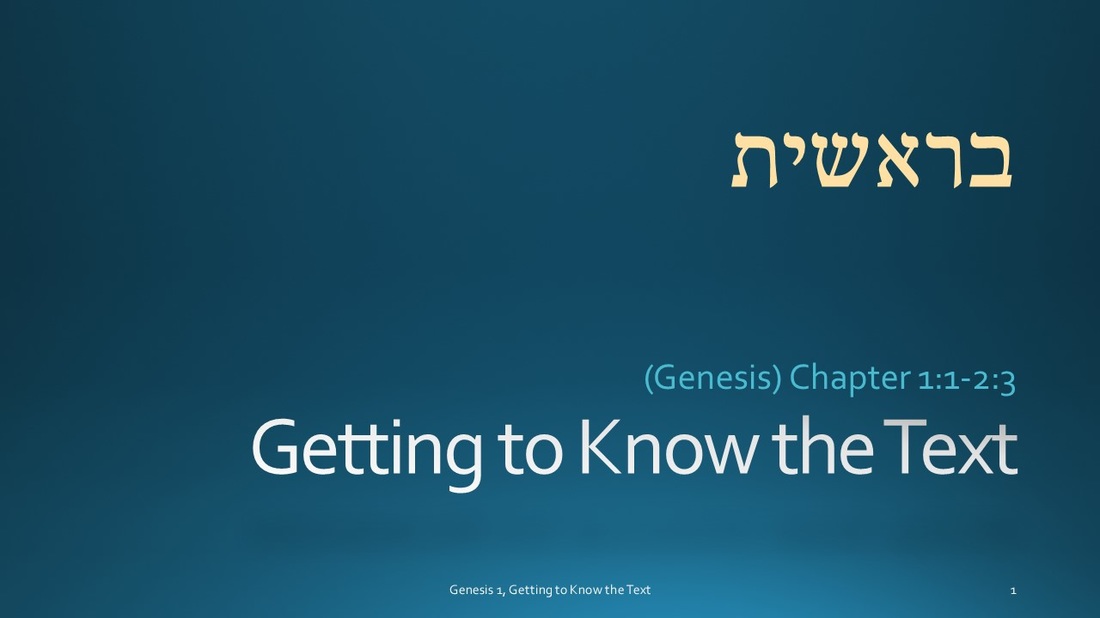
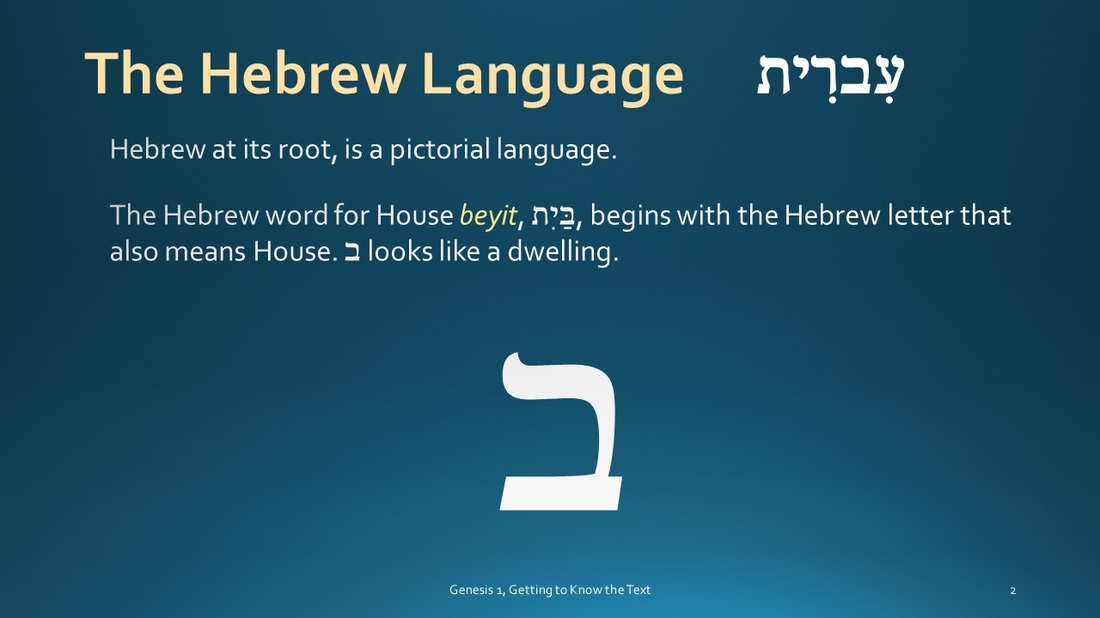

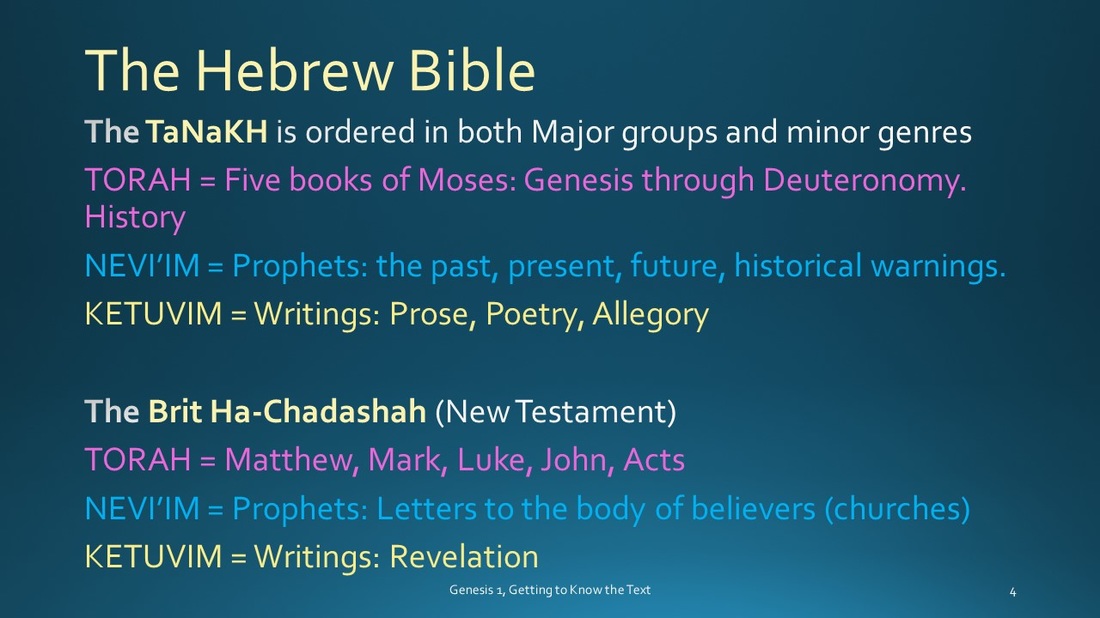
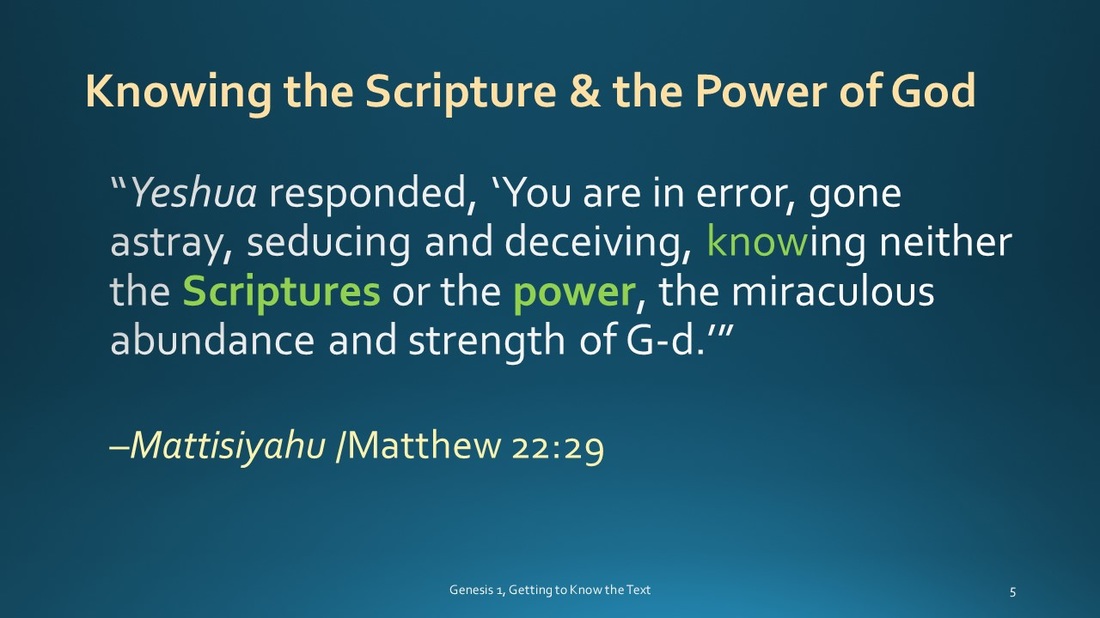
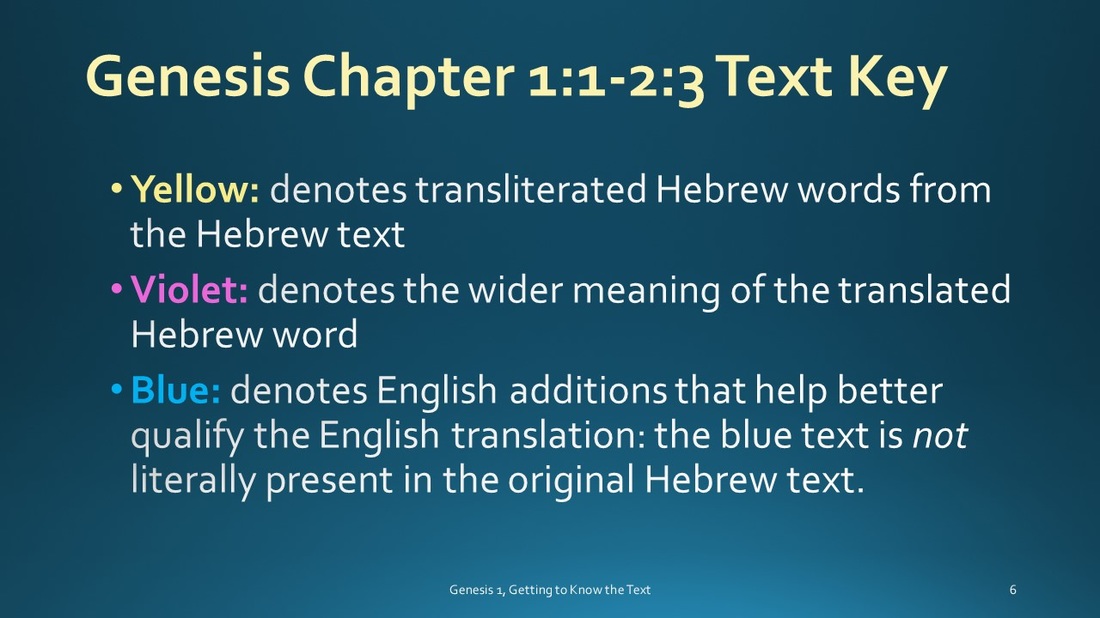
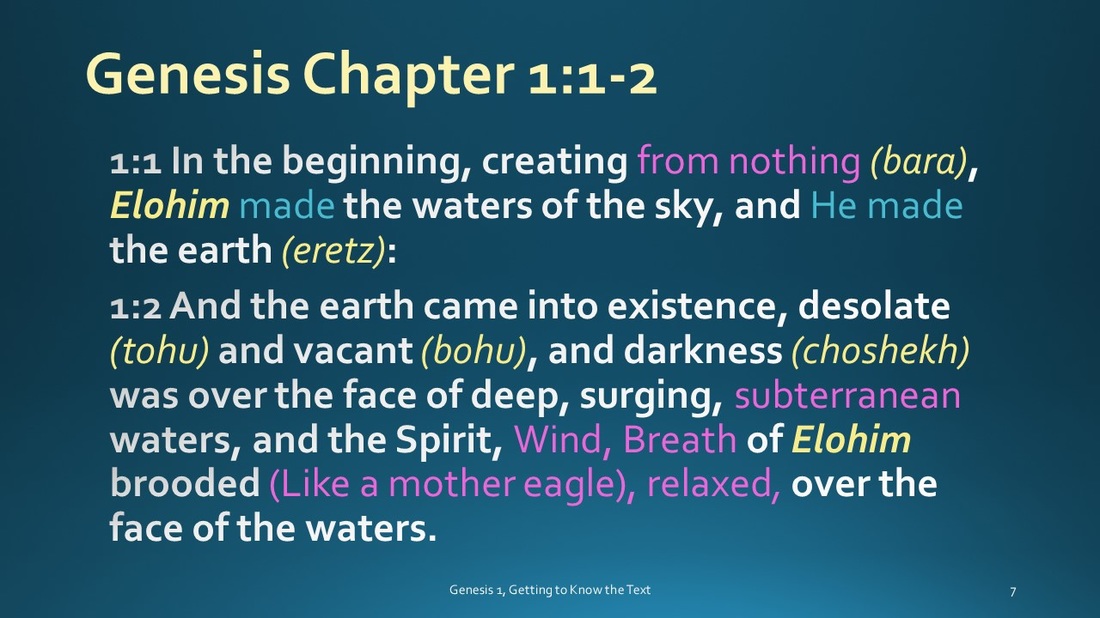
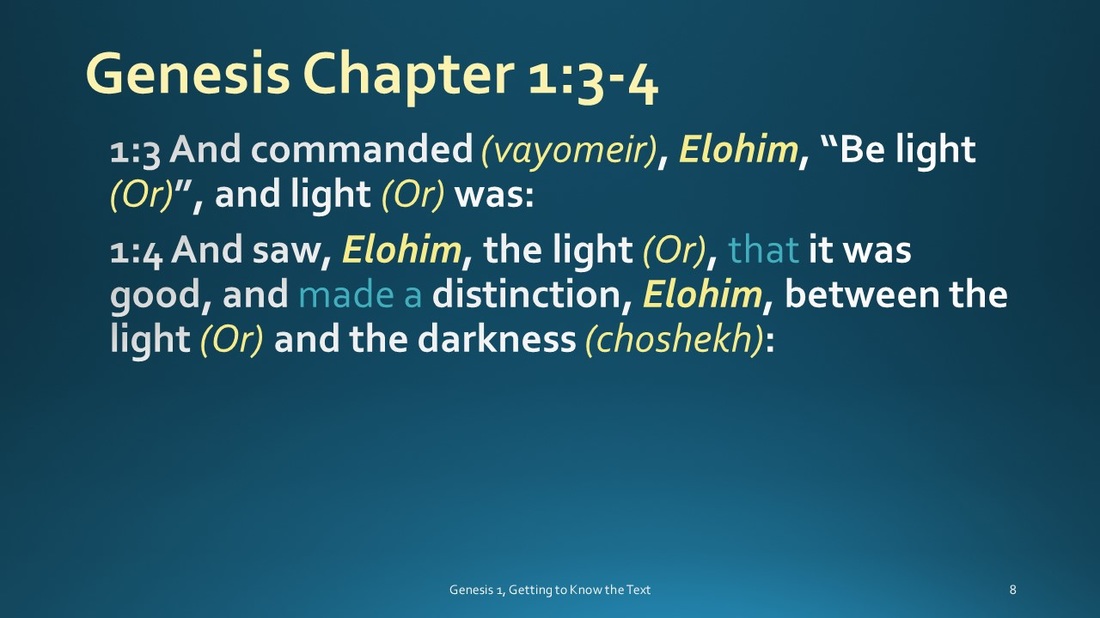
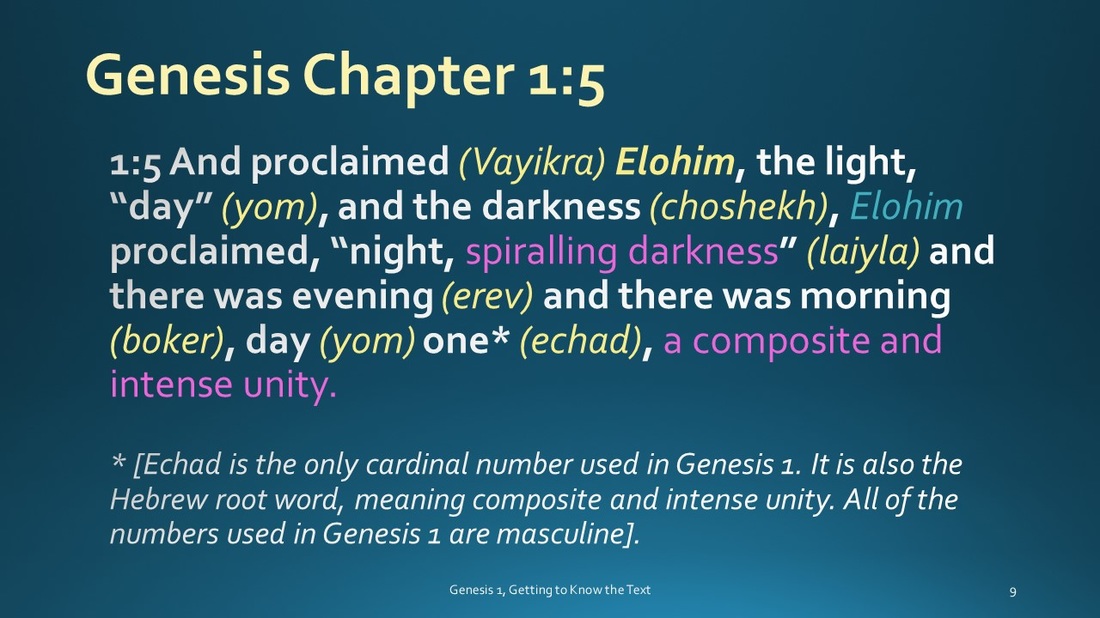
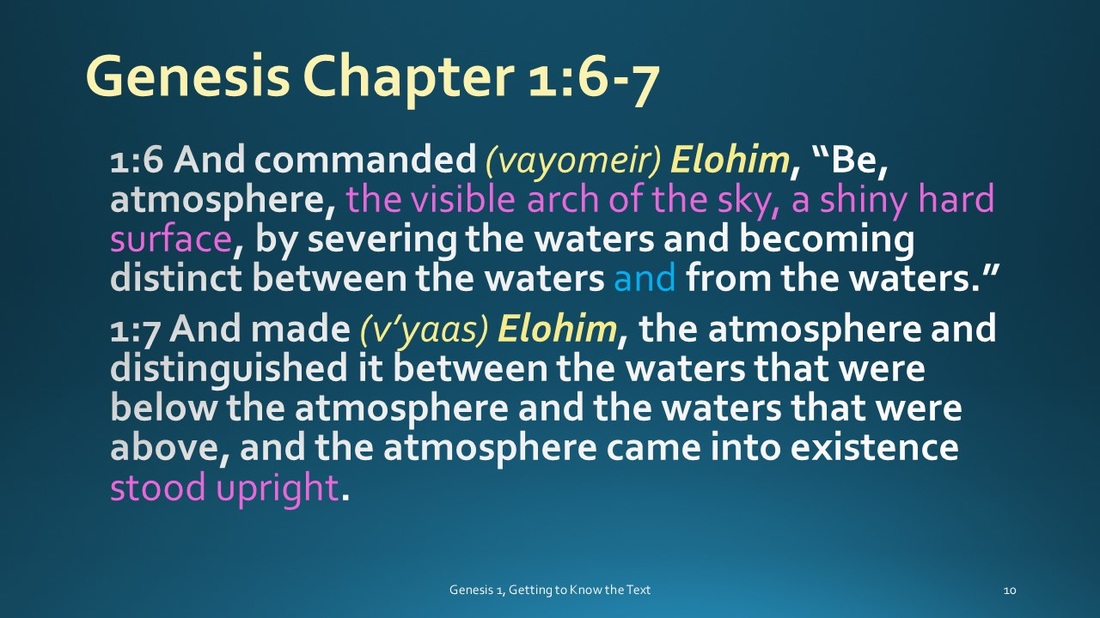
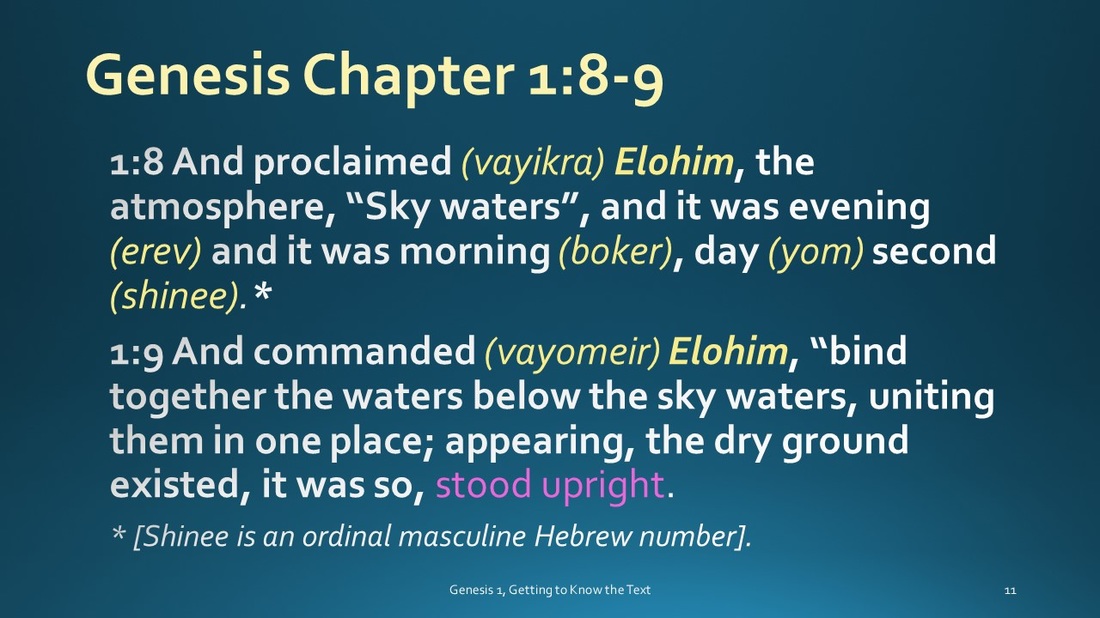
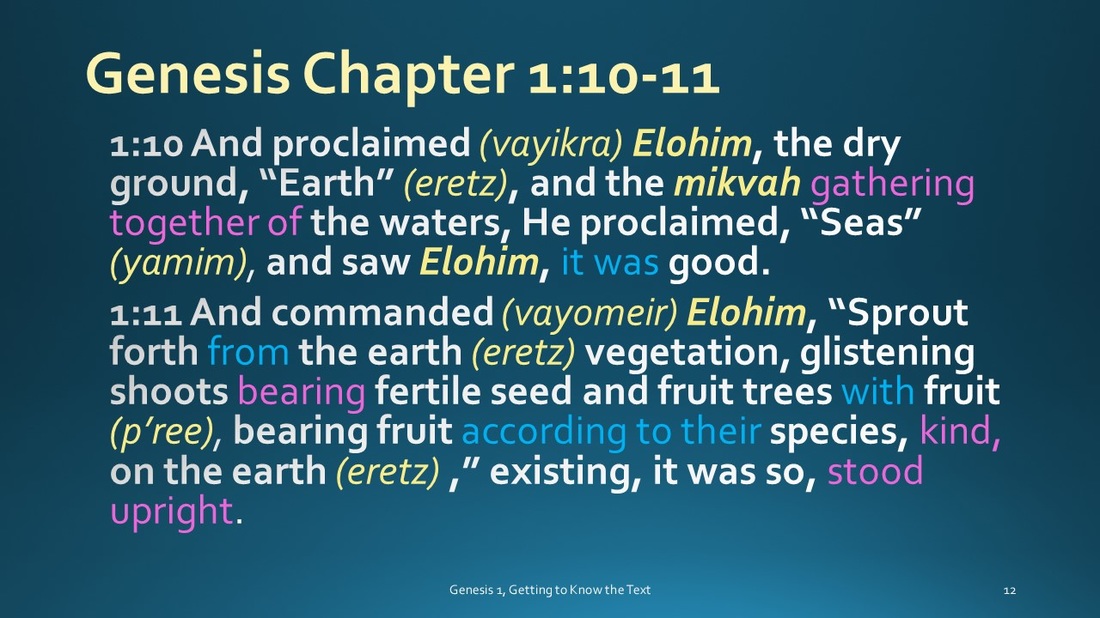
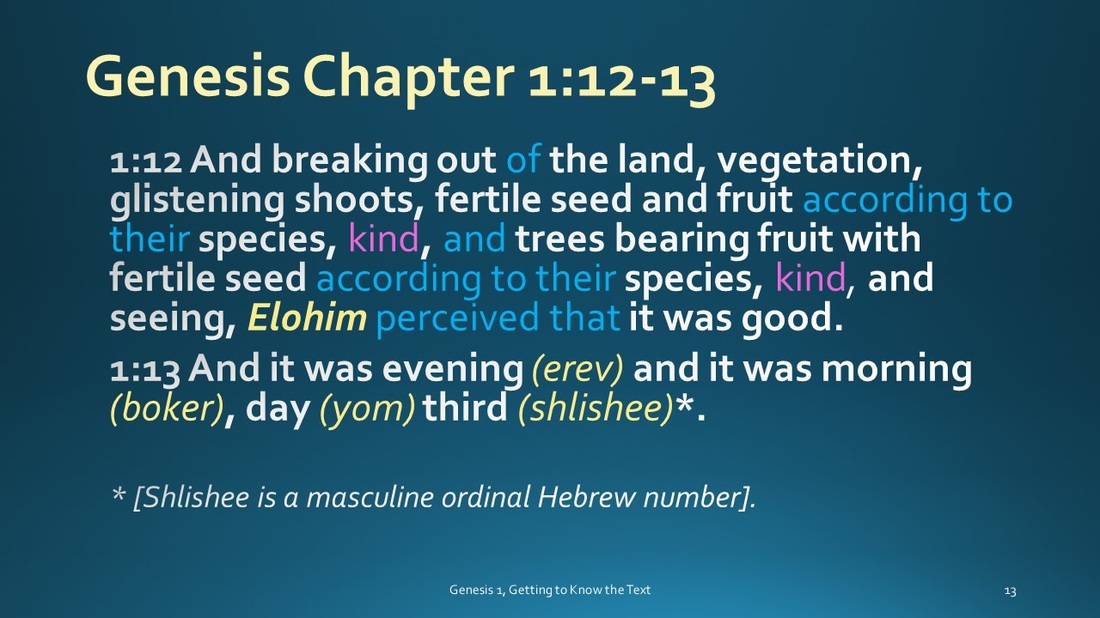
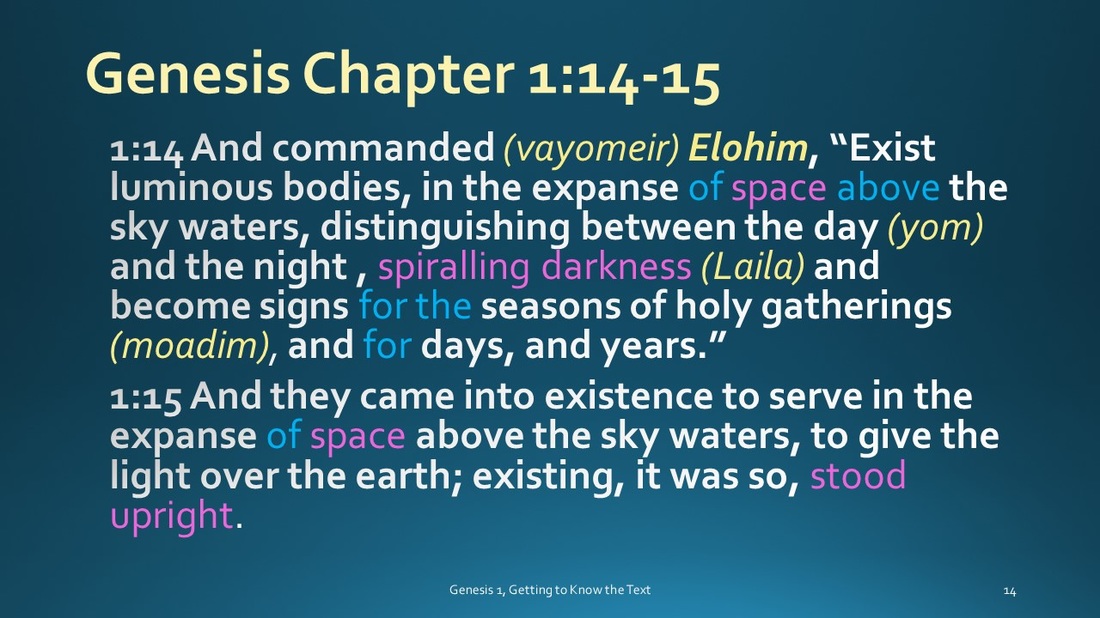

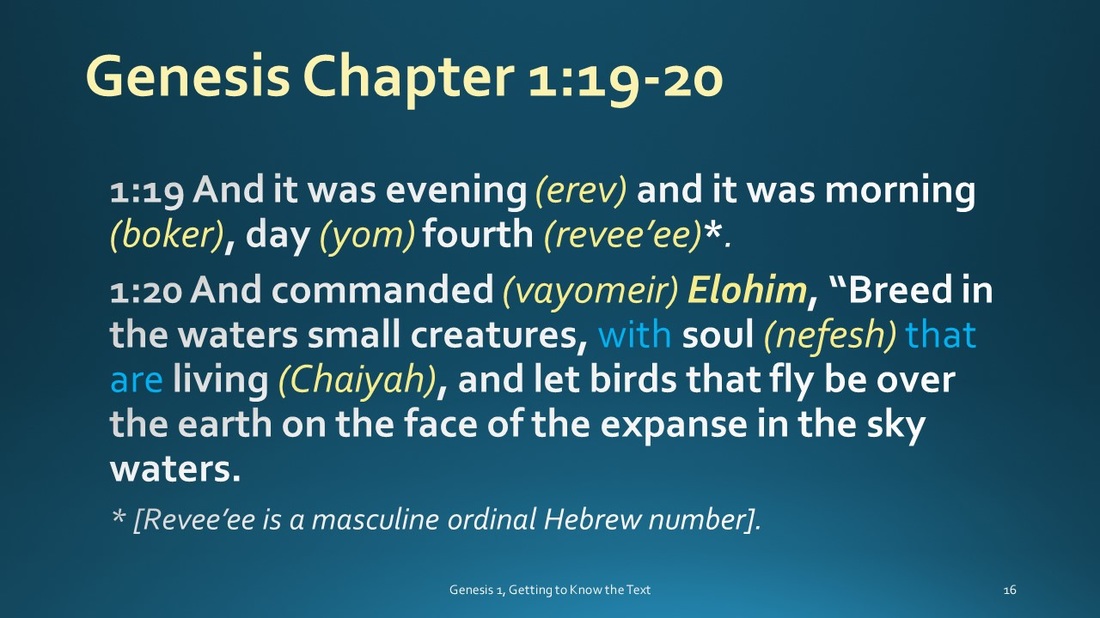

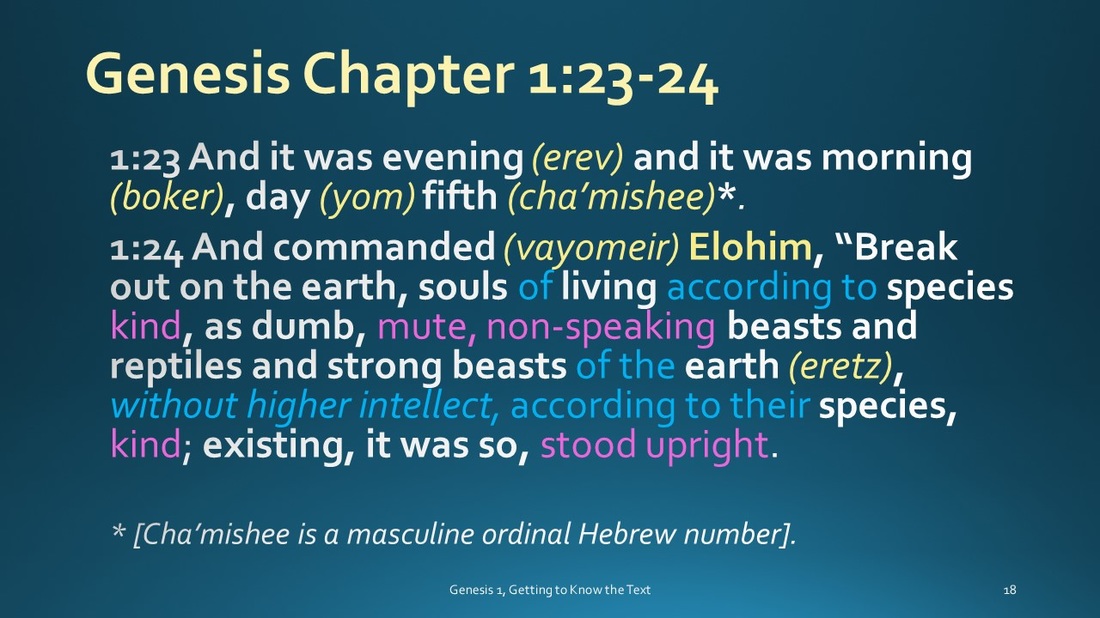


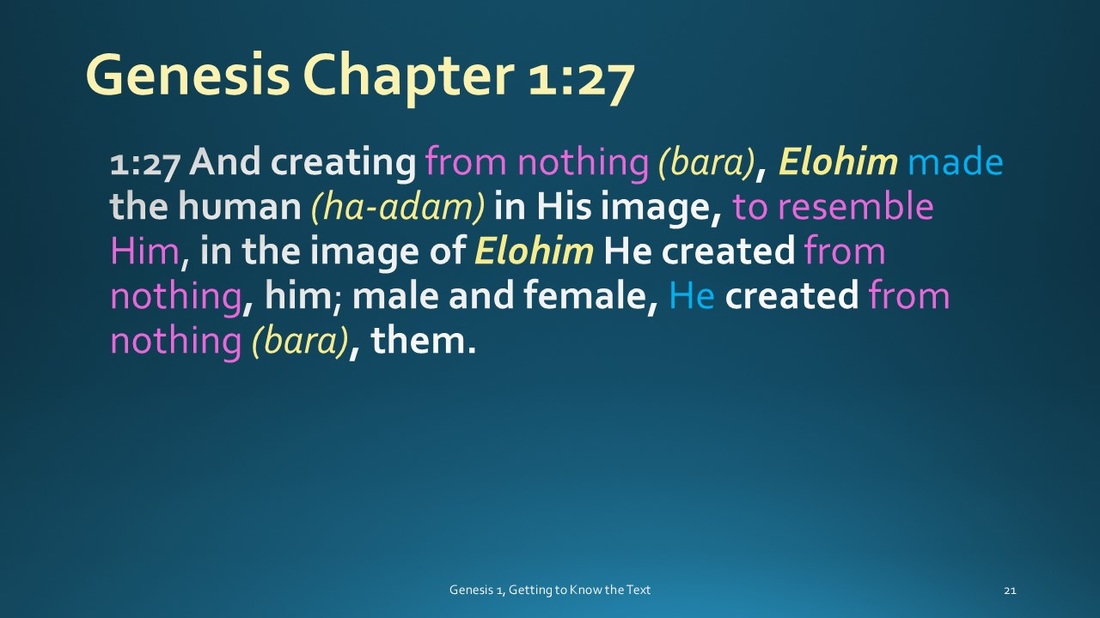
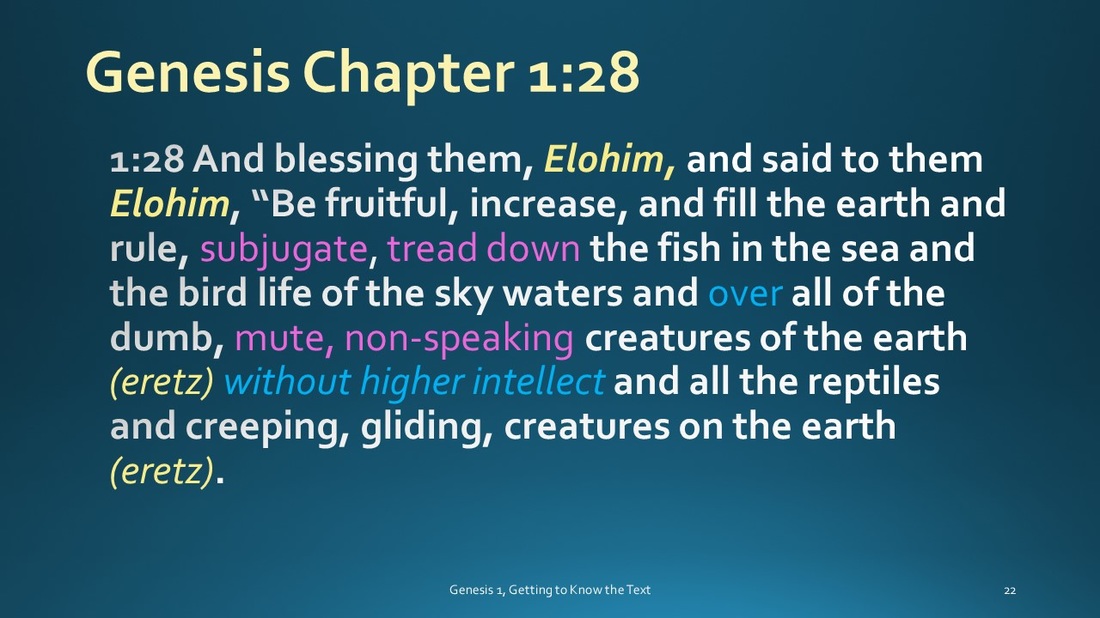
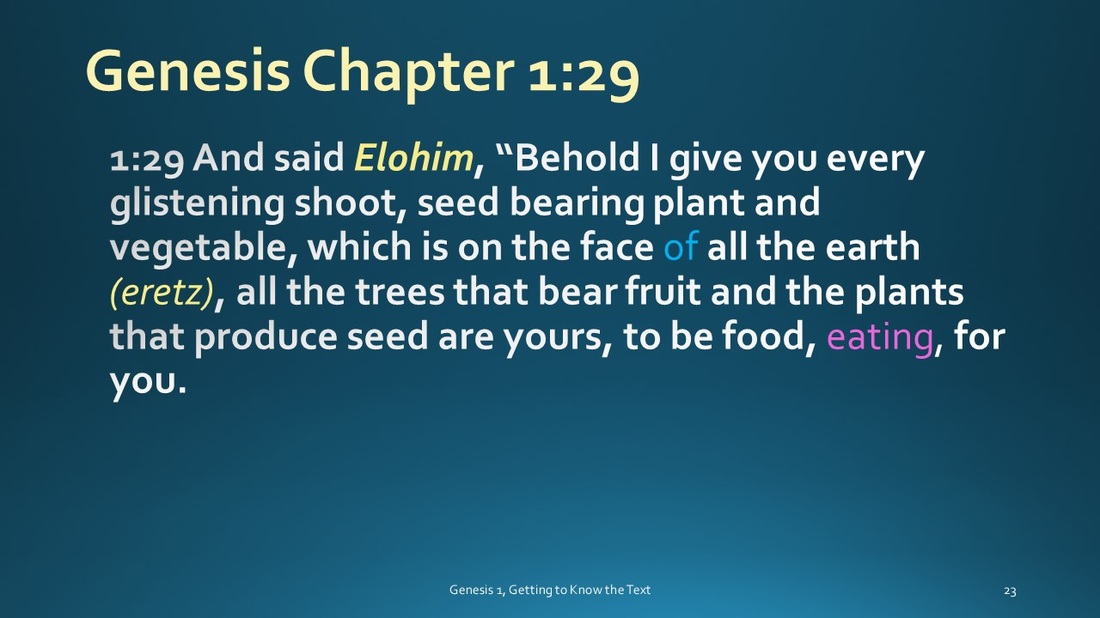
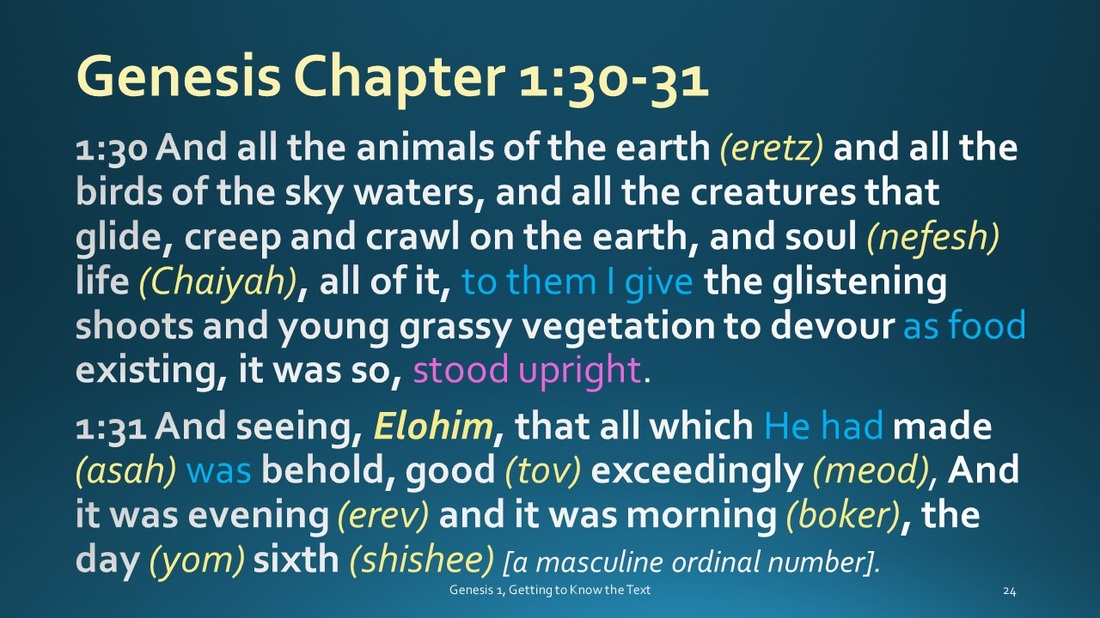

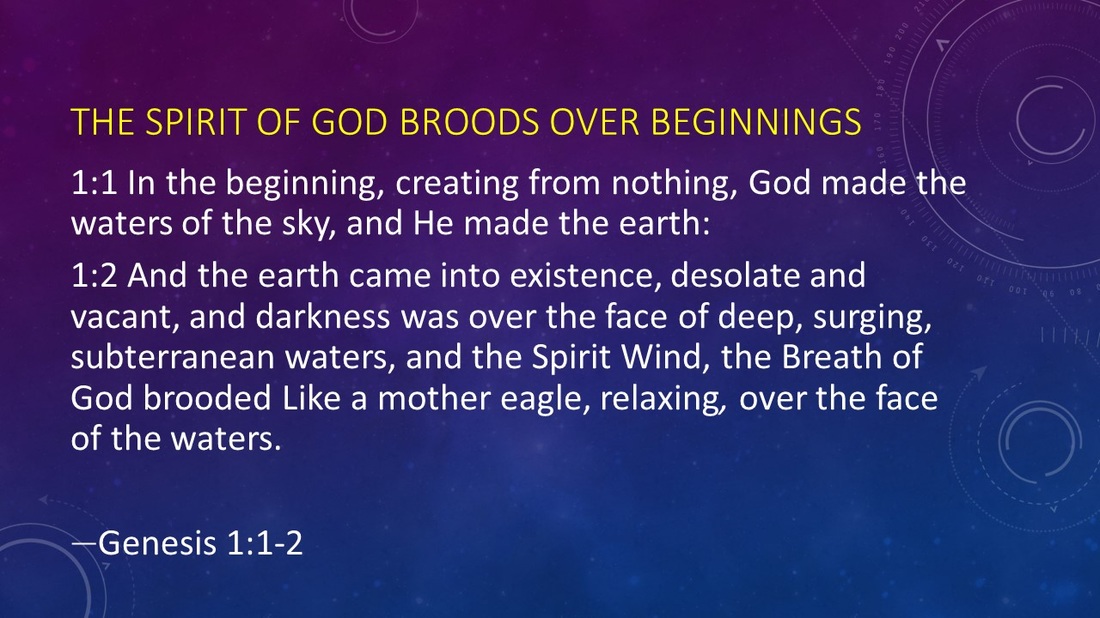
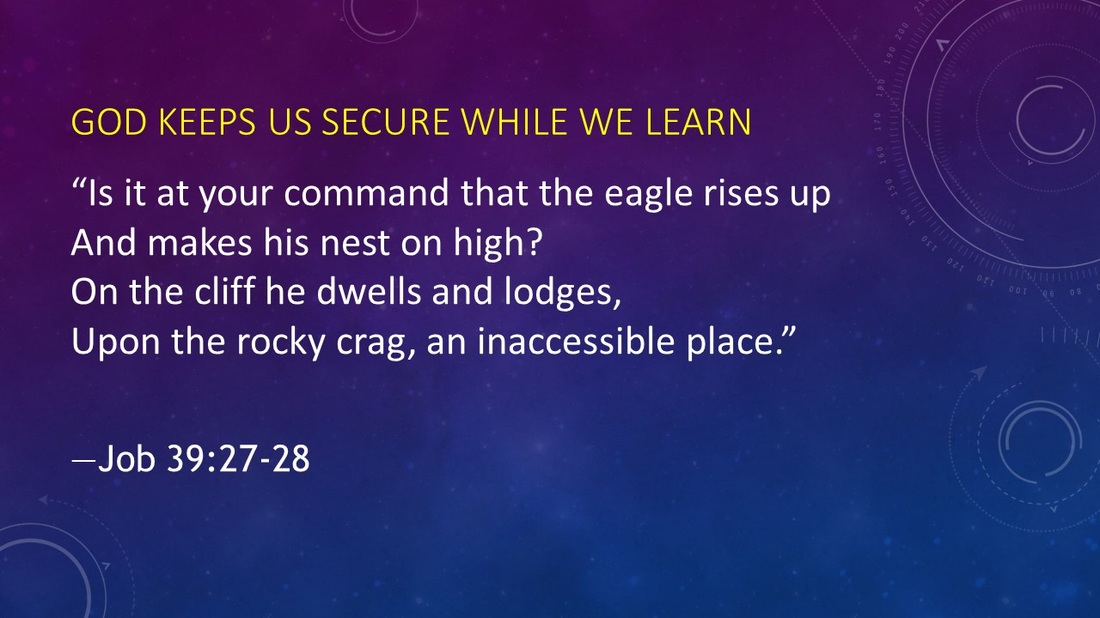
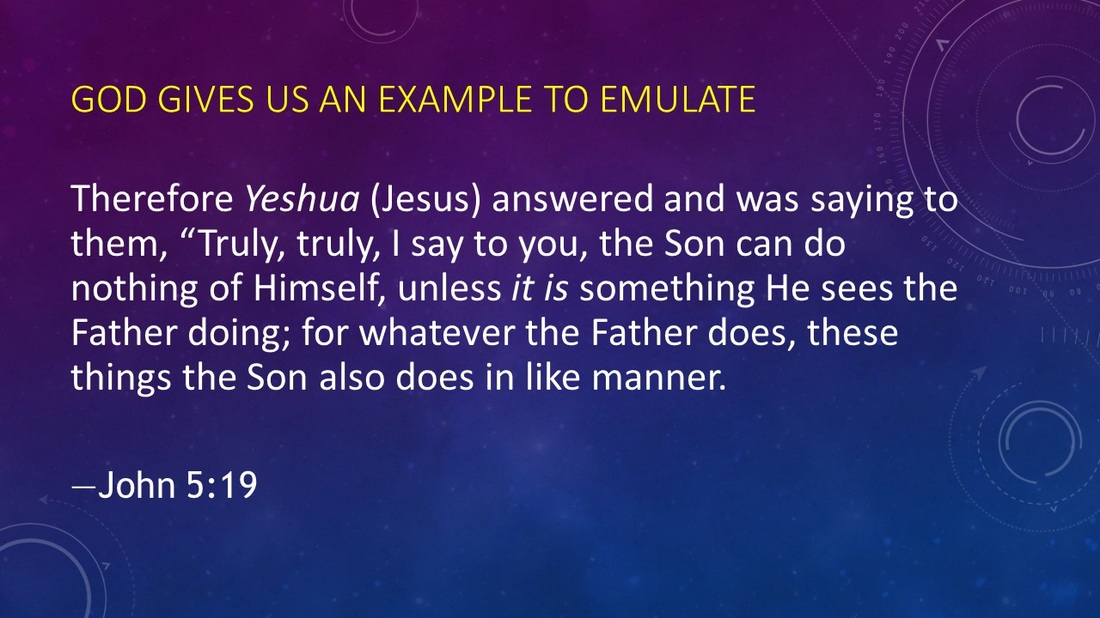
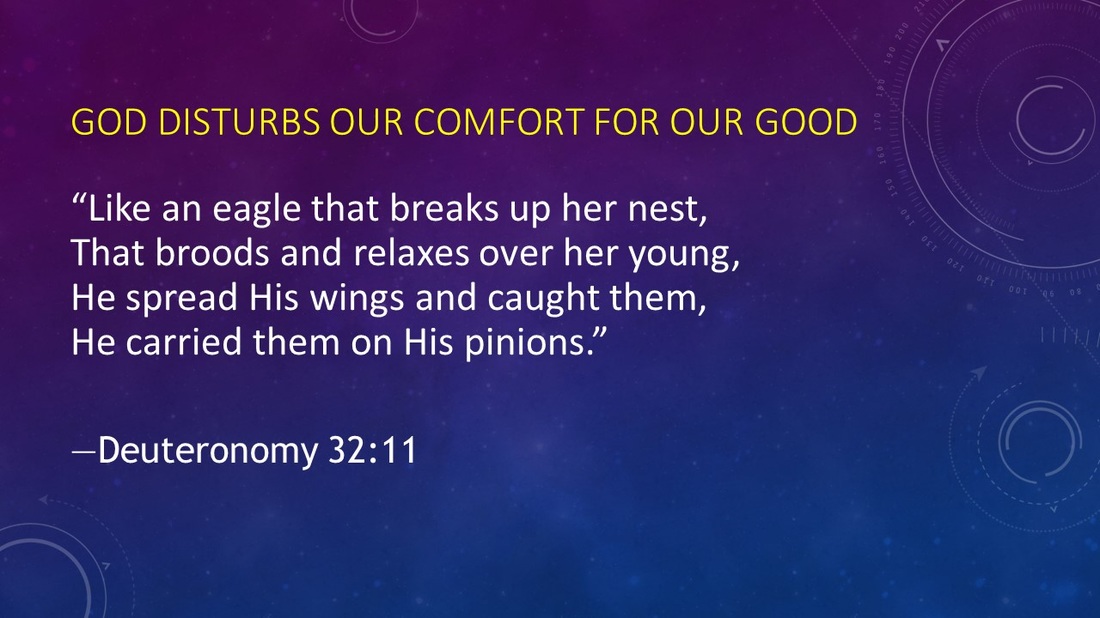
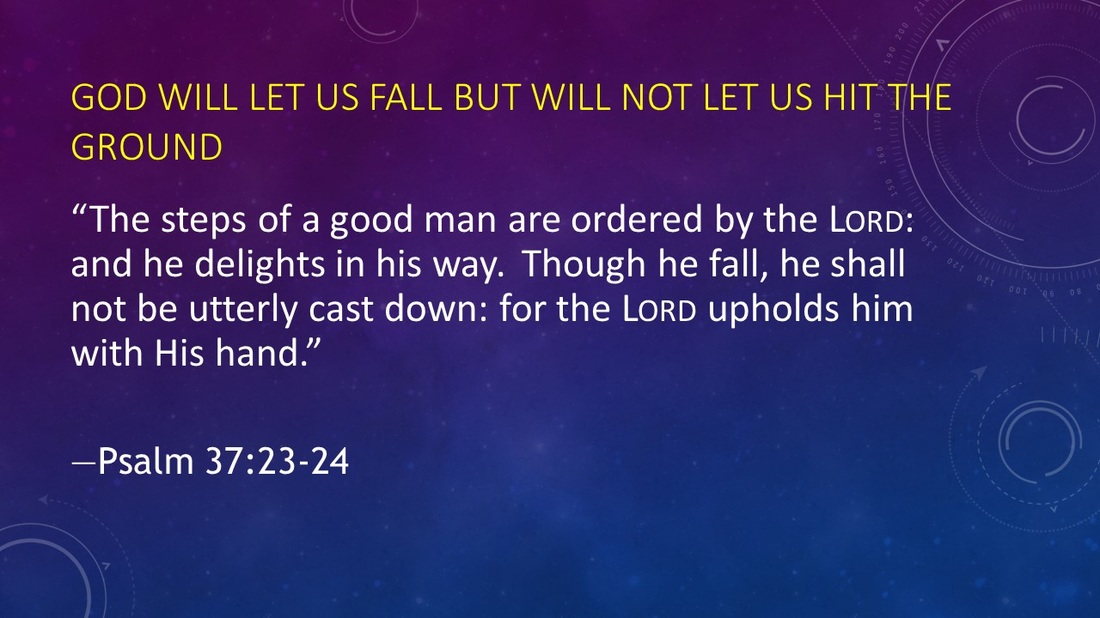
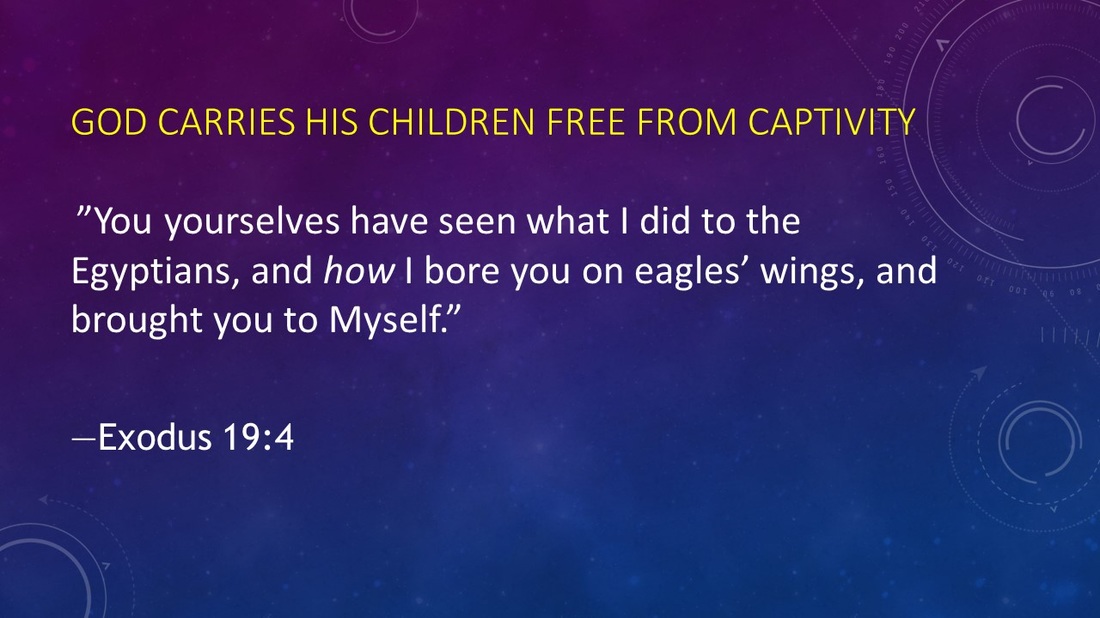
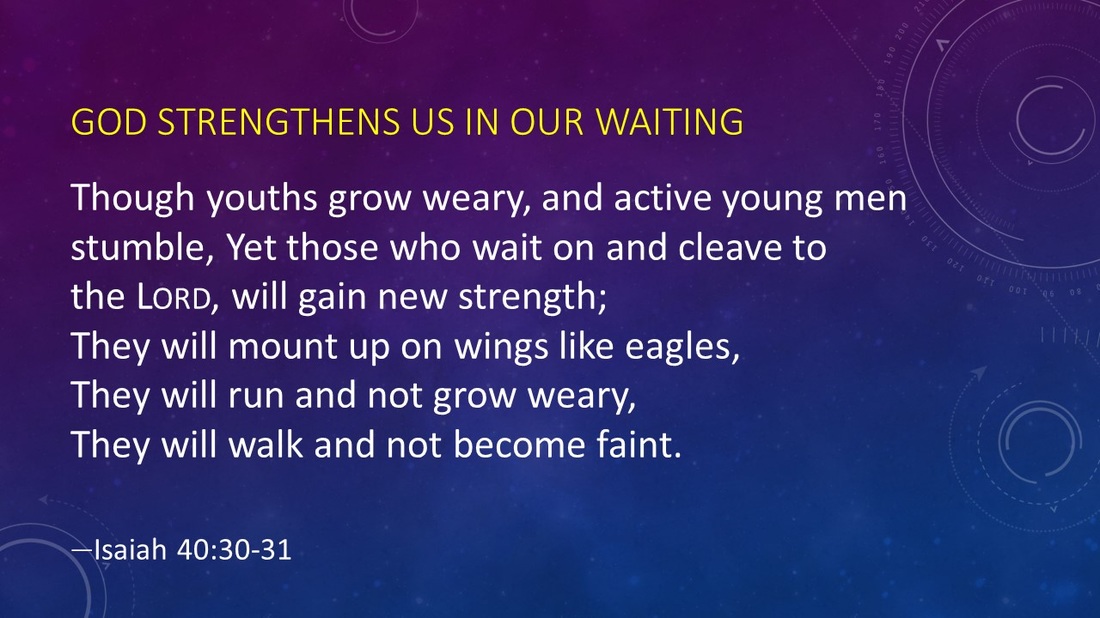
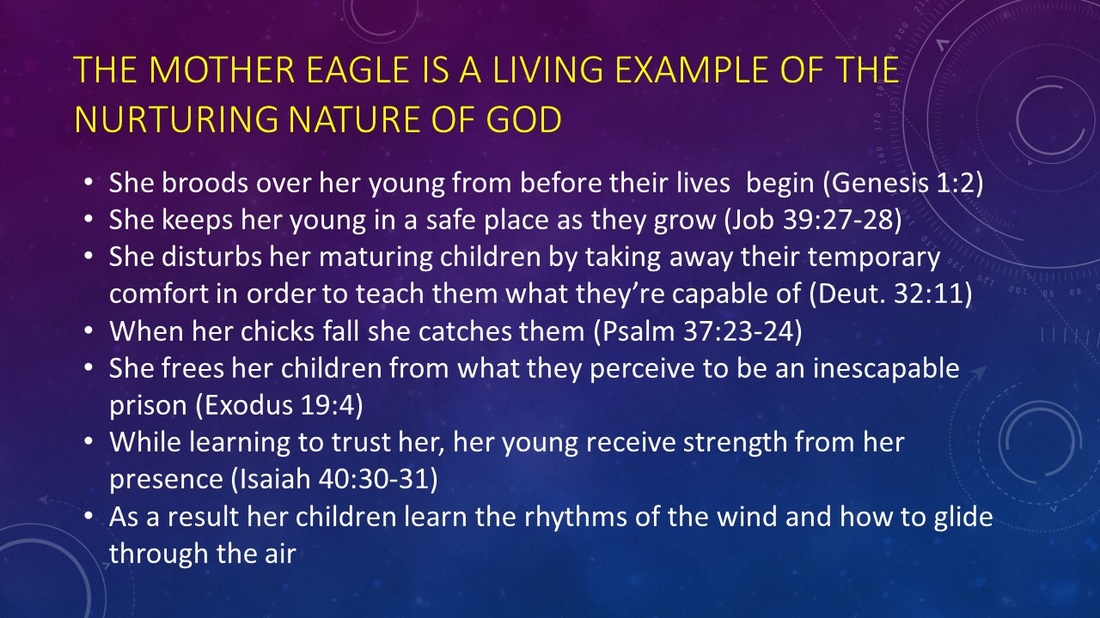
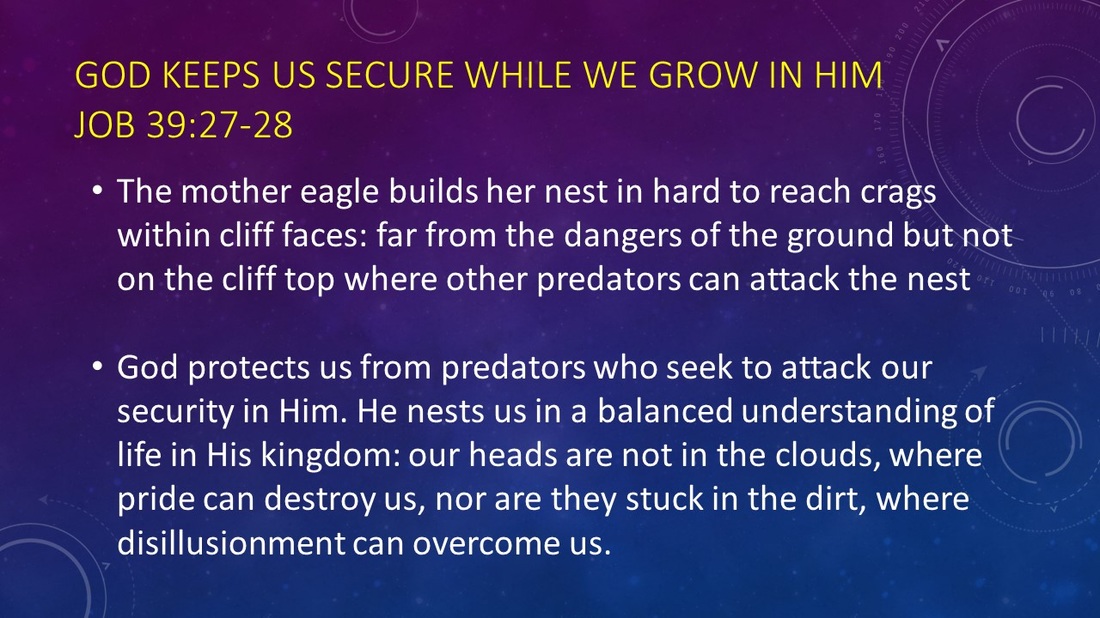
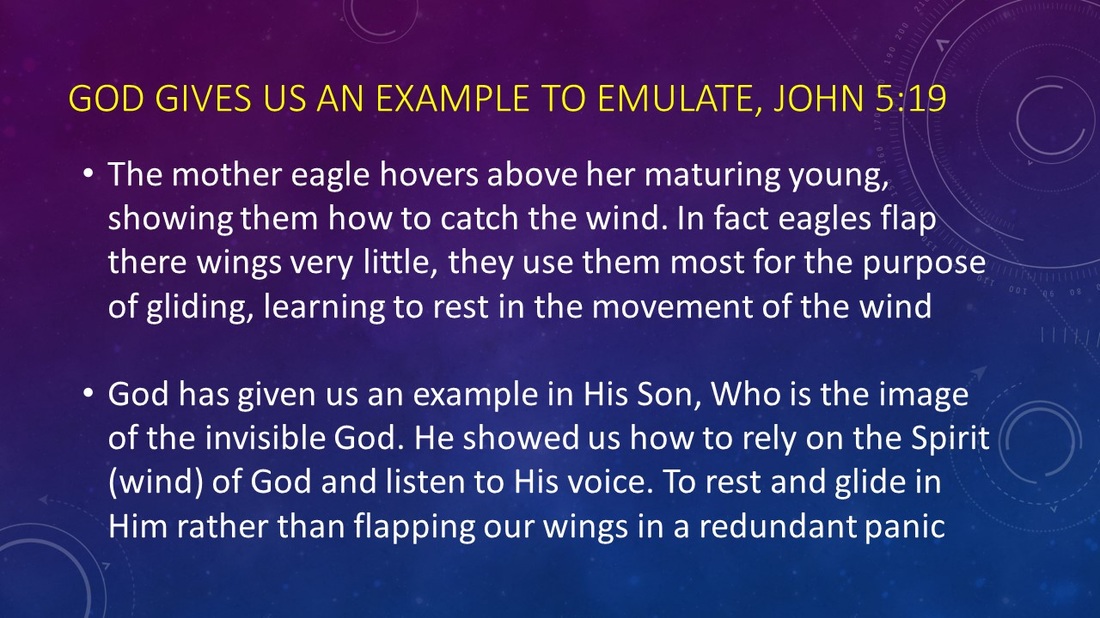
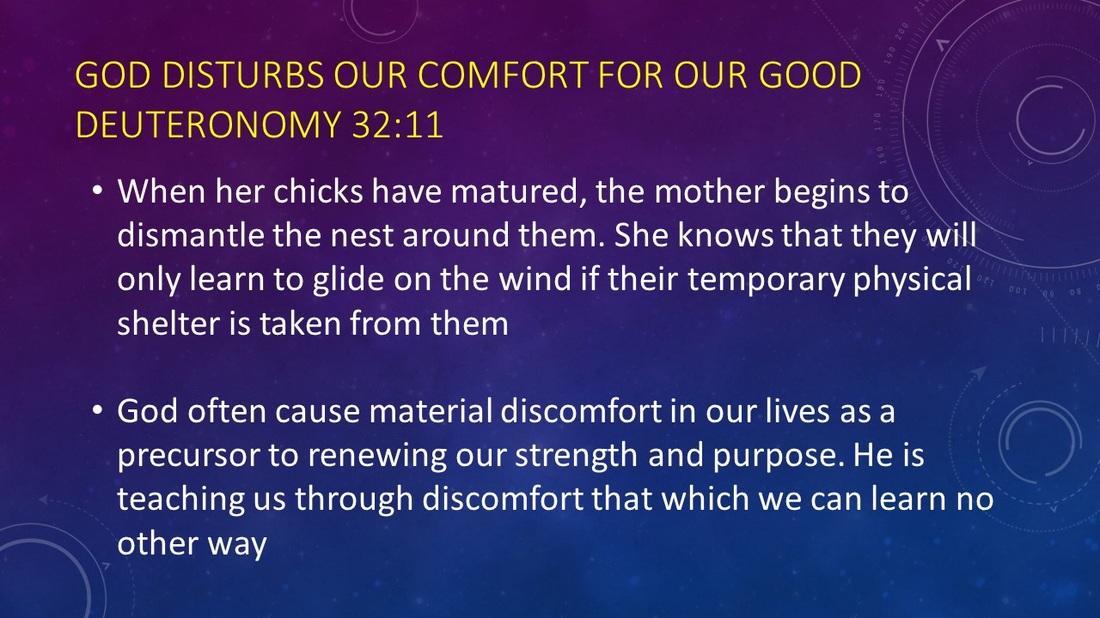

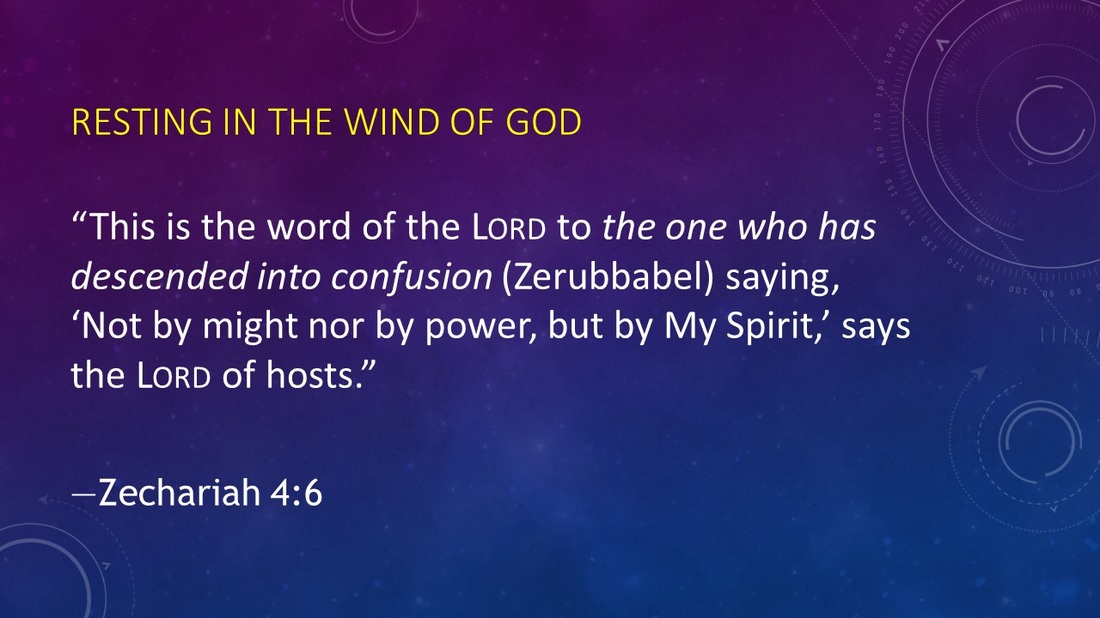
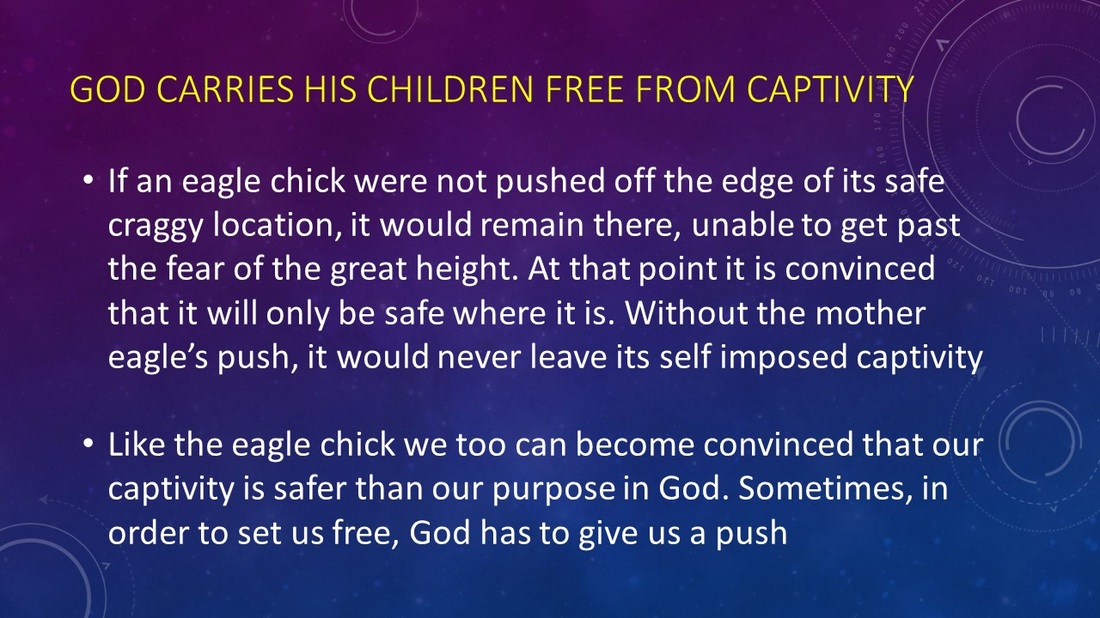


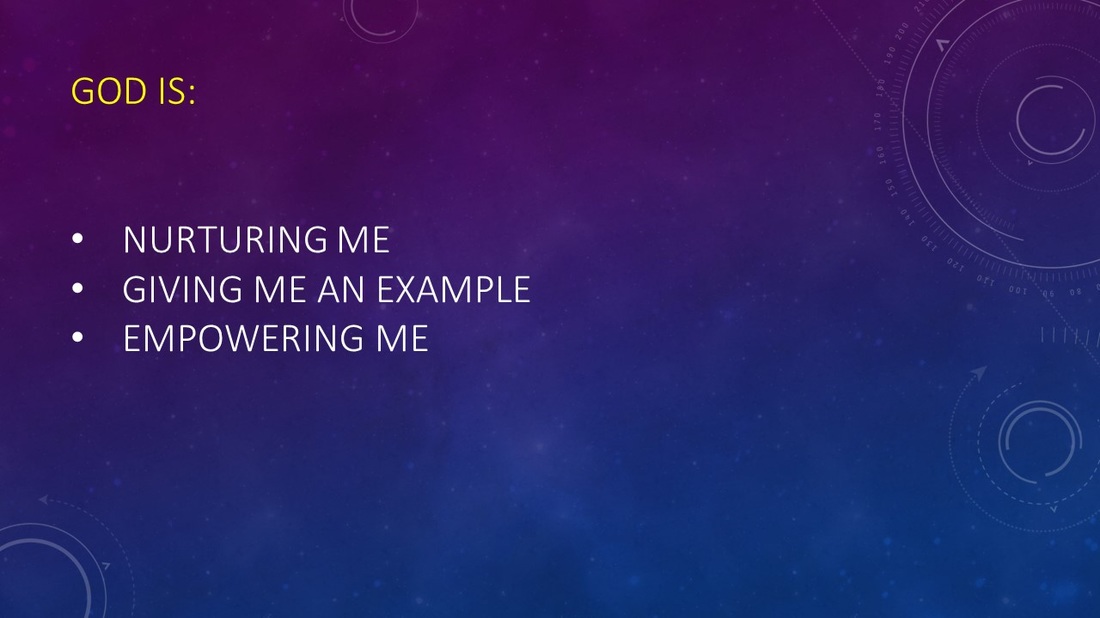
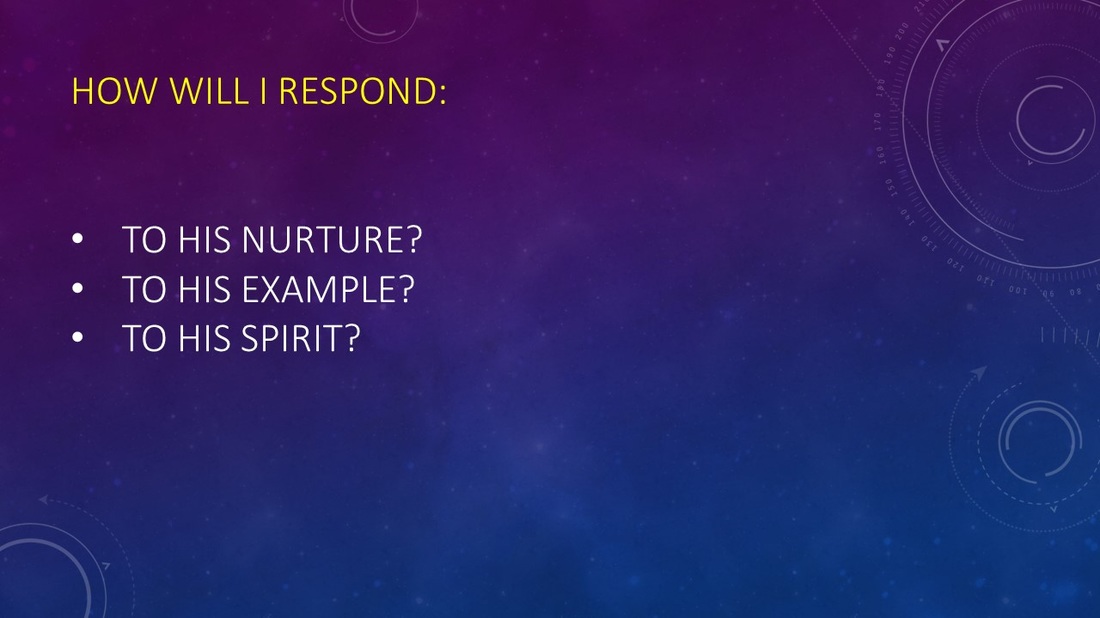
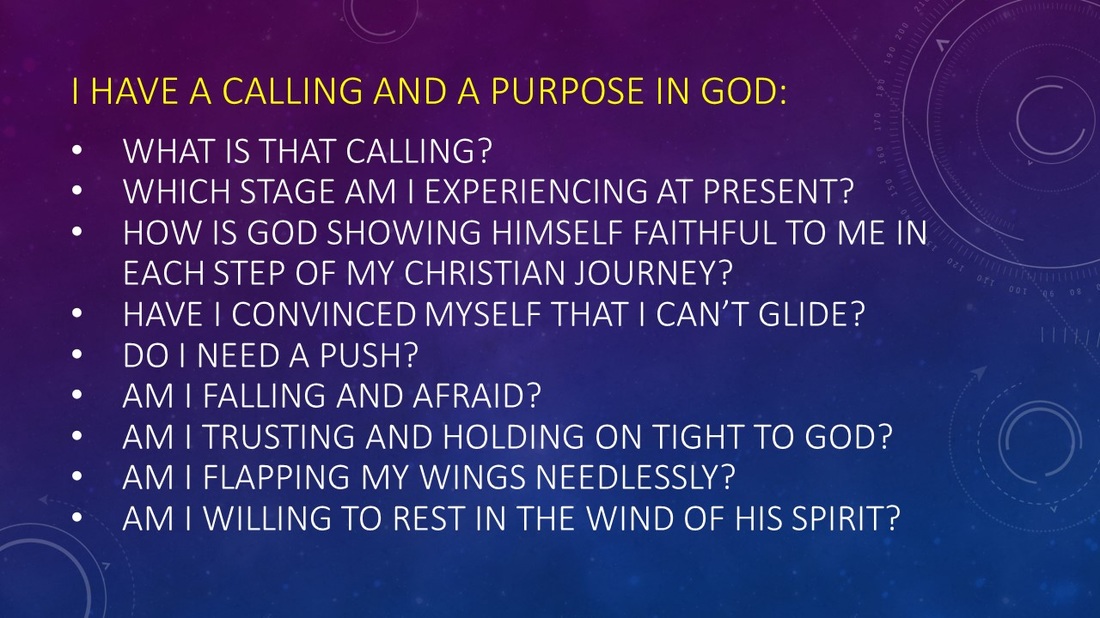

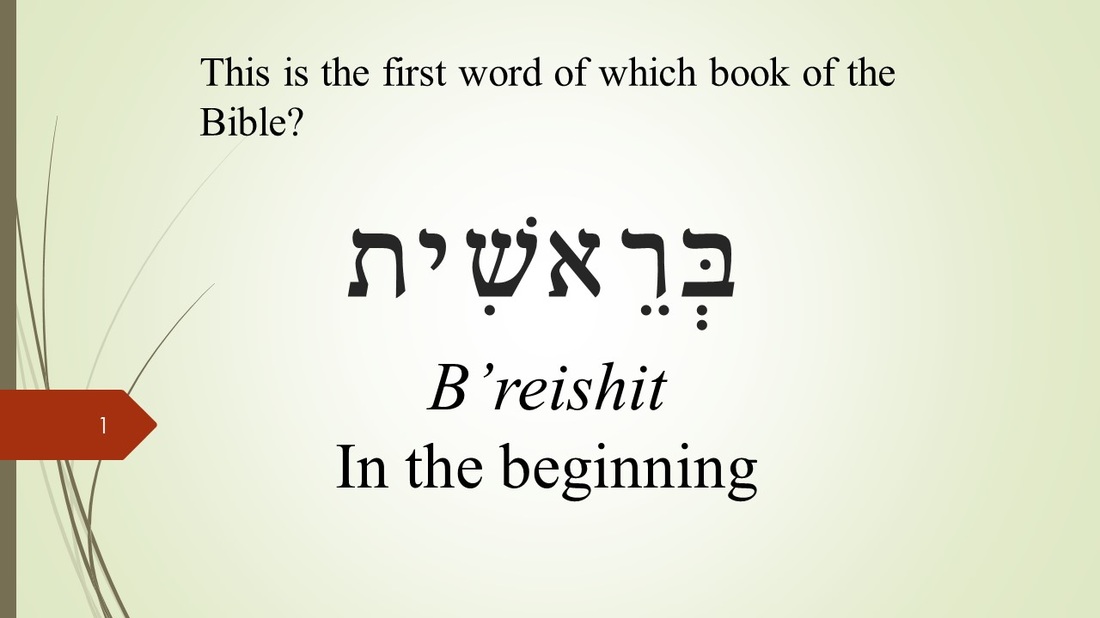
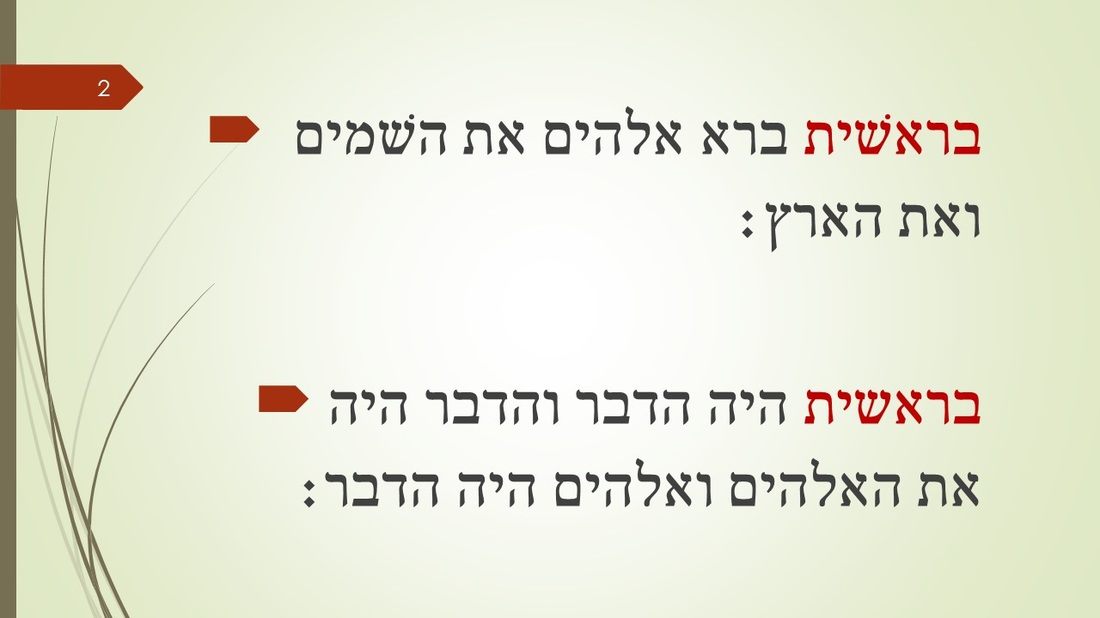

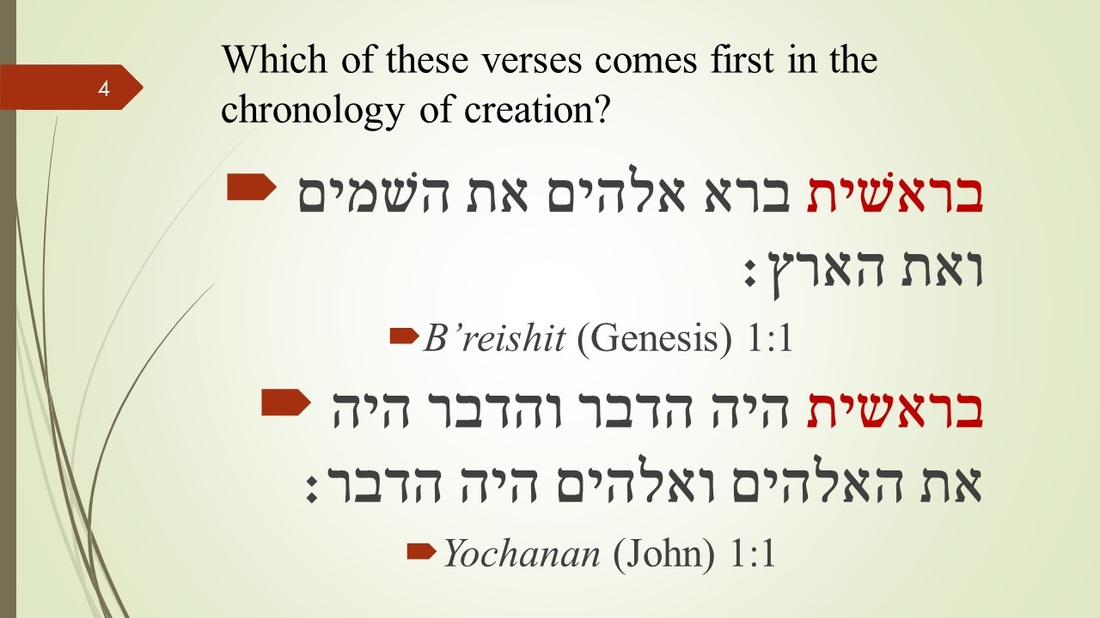
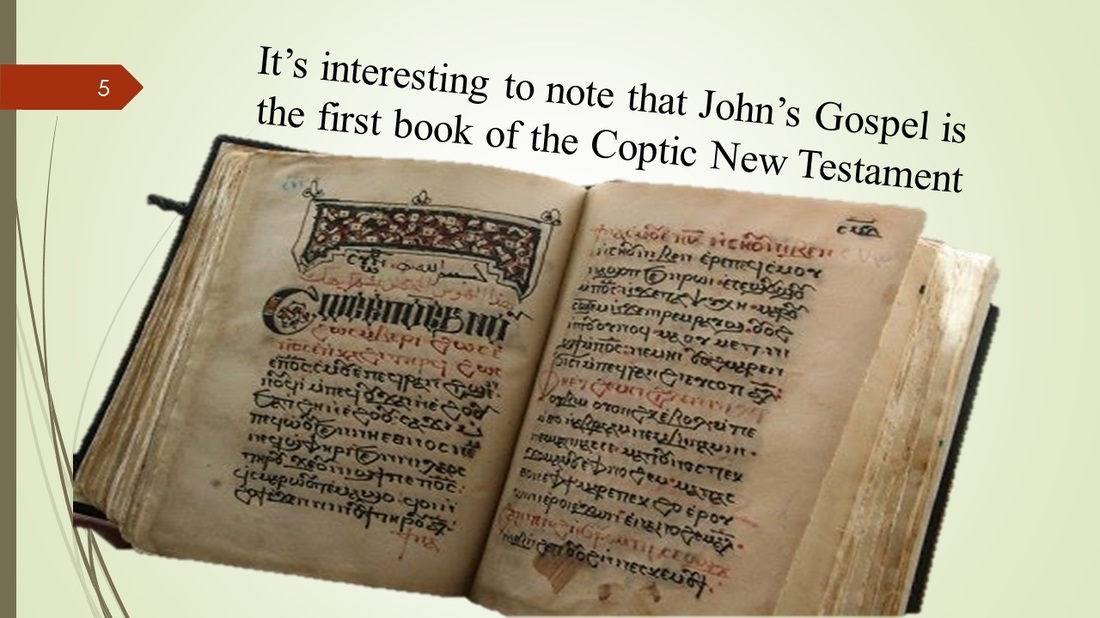
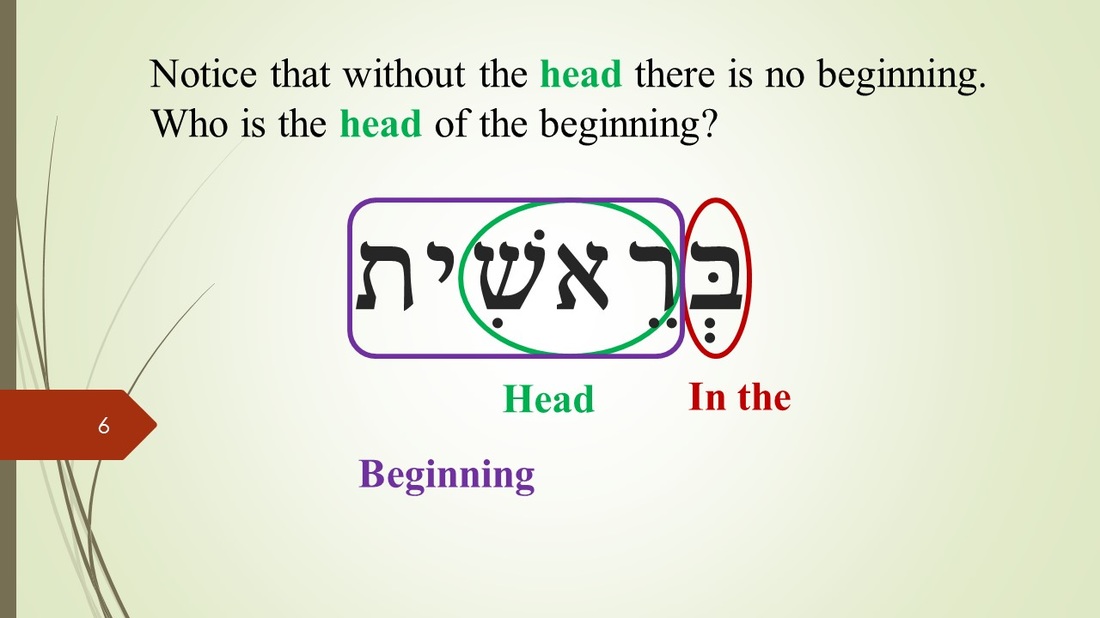
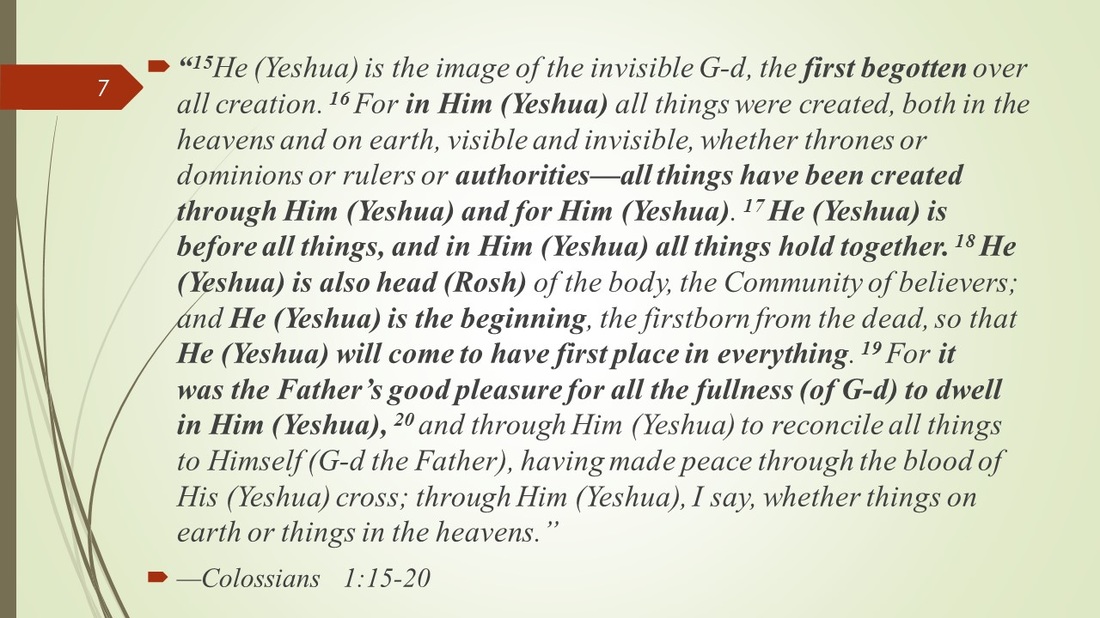
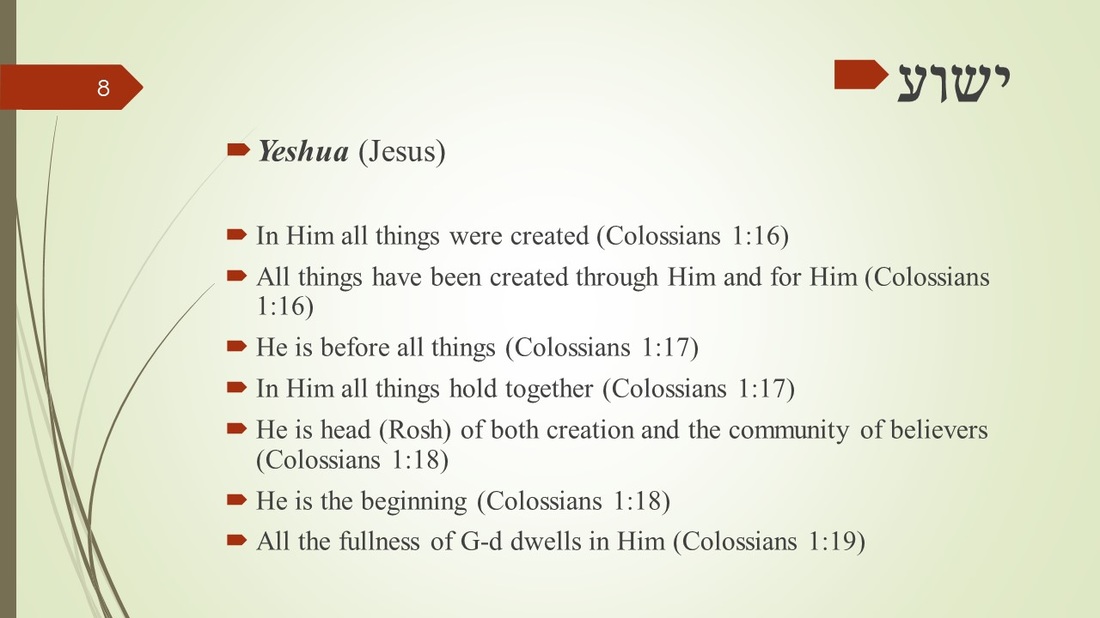
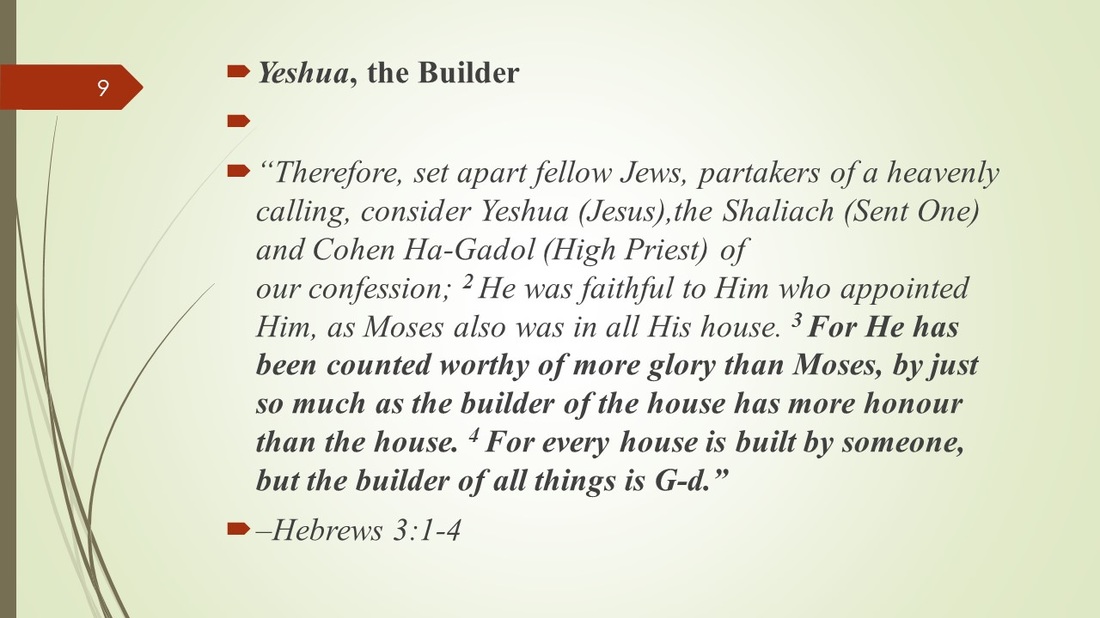
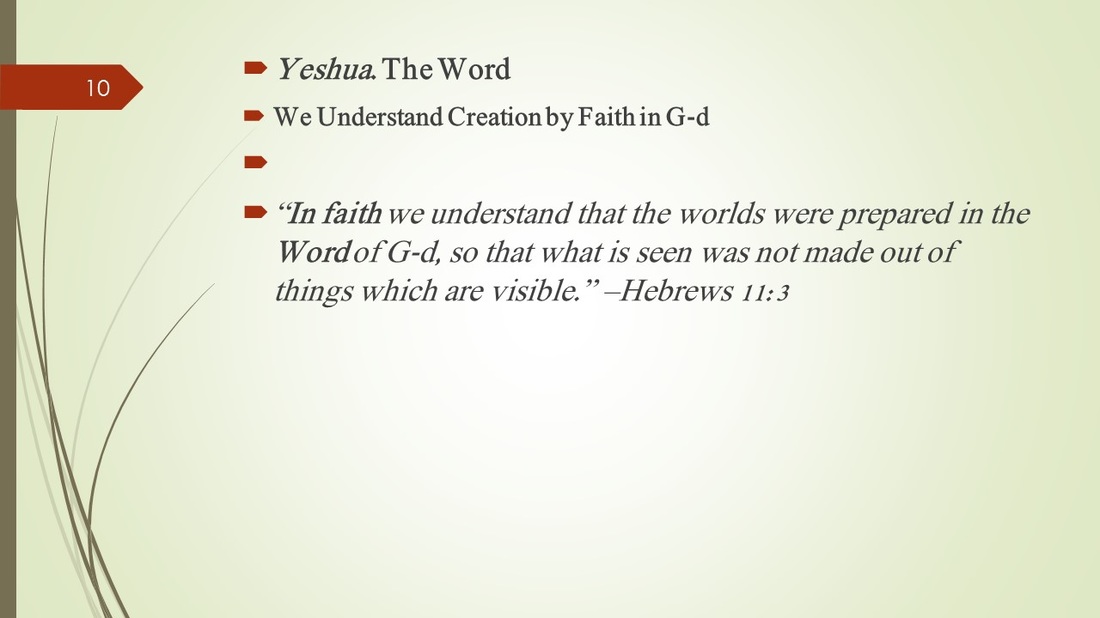
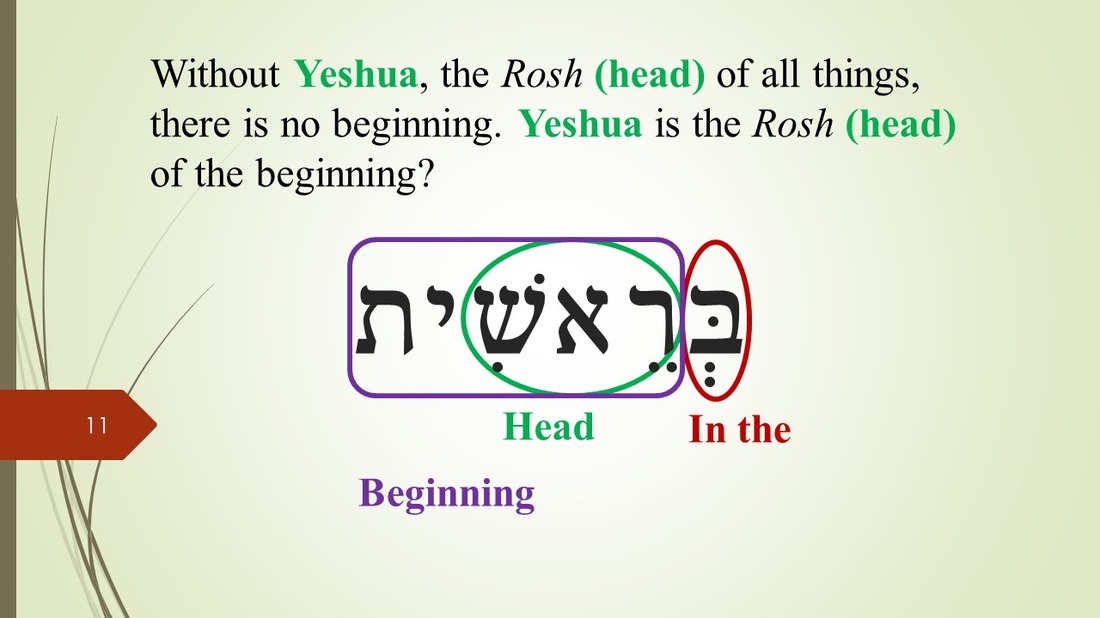
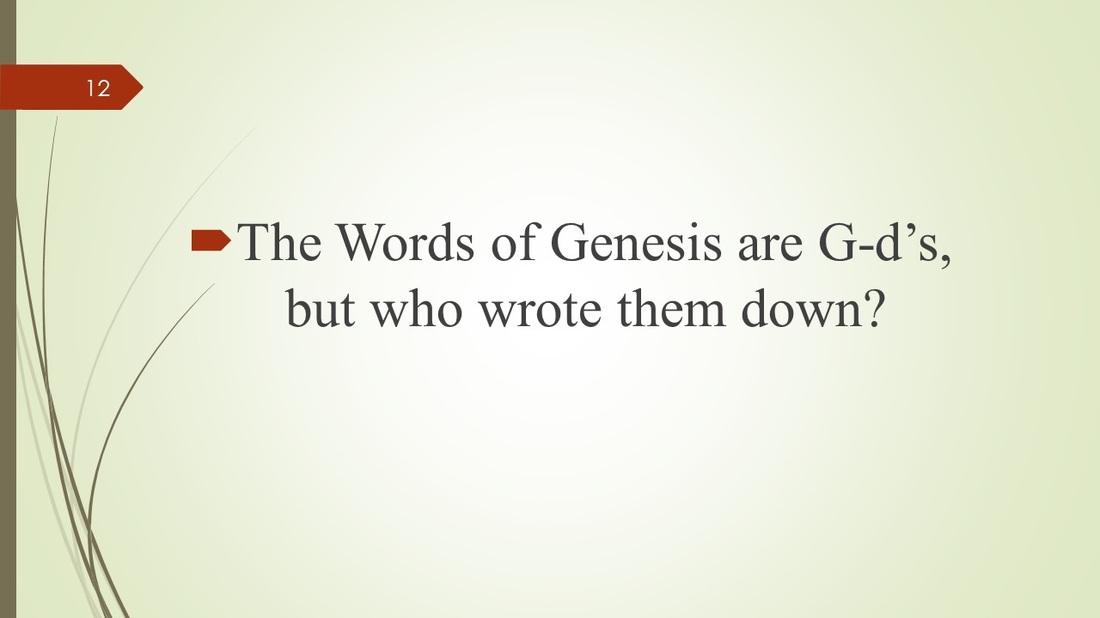
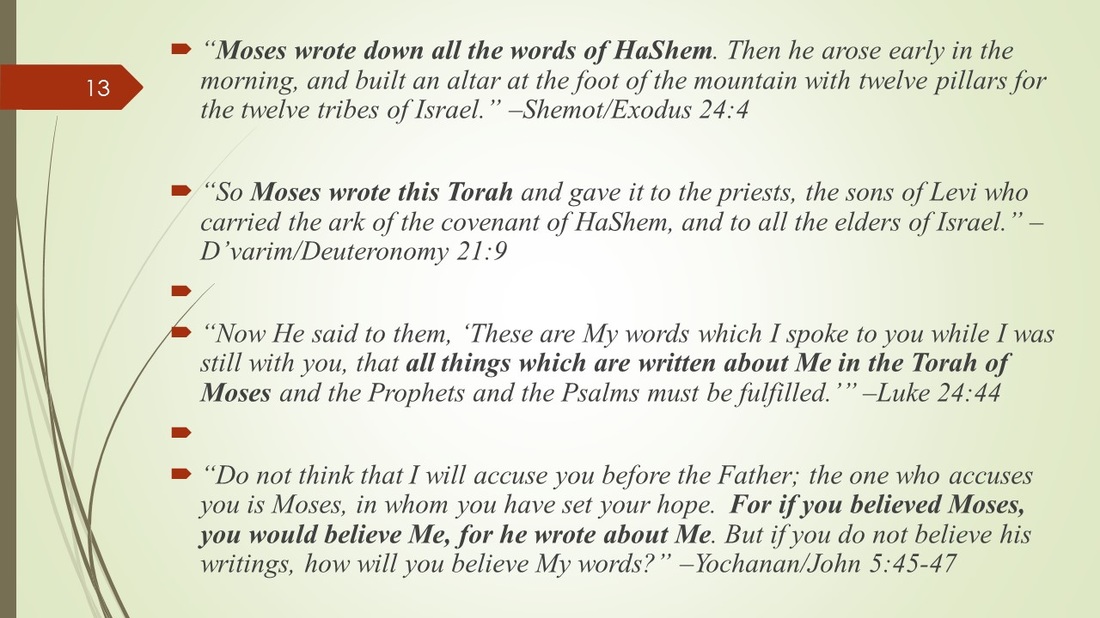
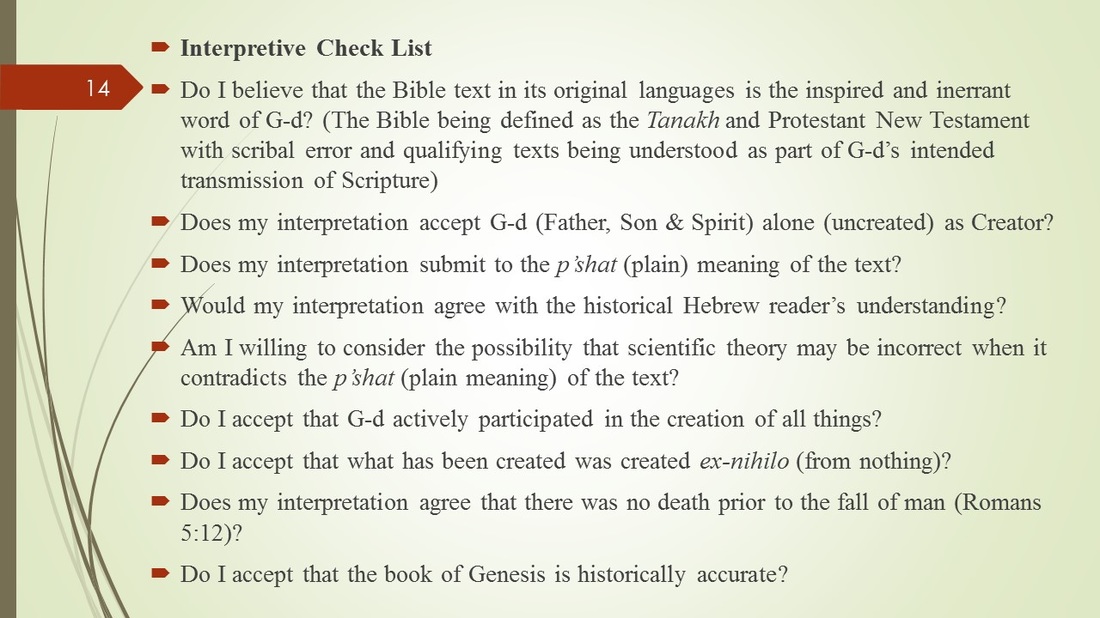
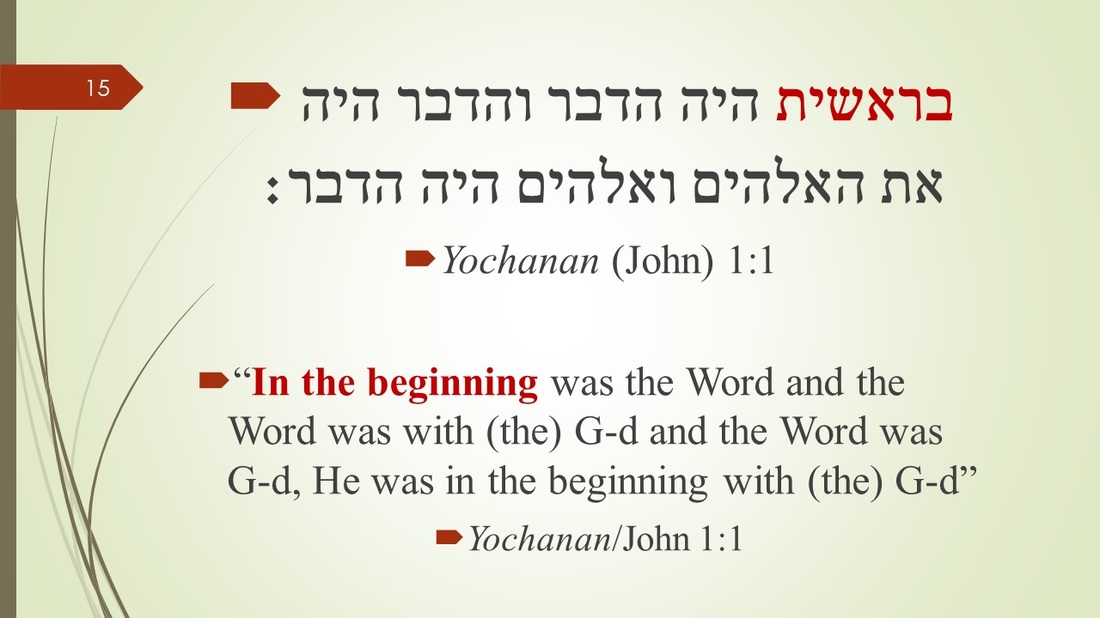


 RSS Feed
RSS Feed